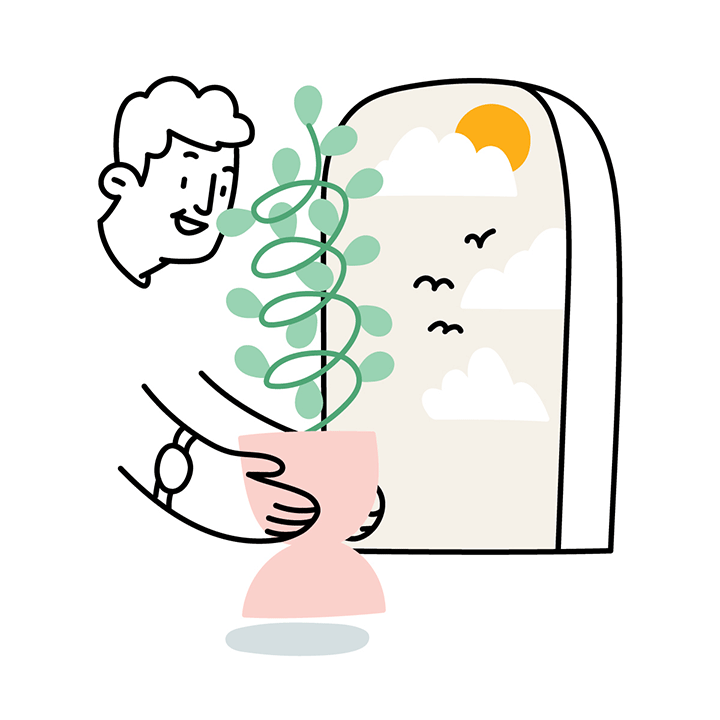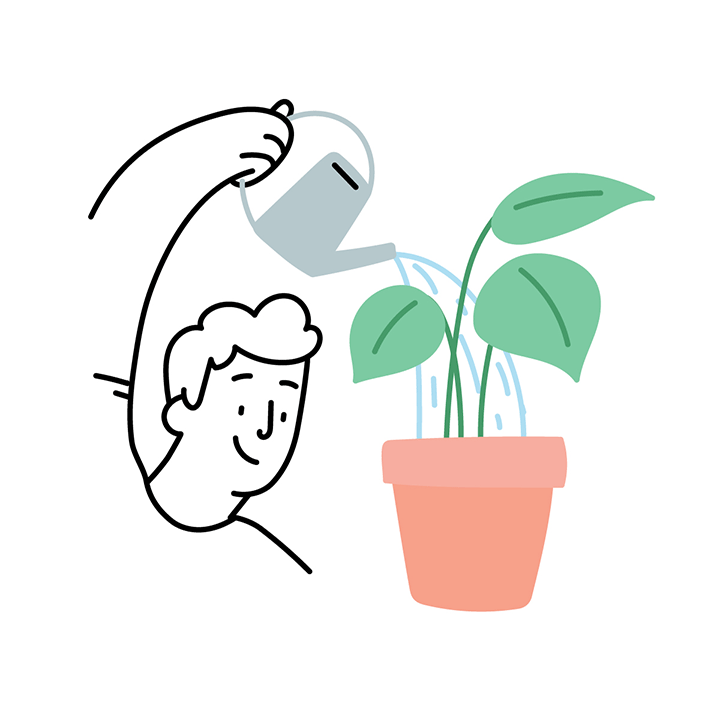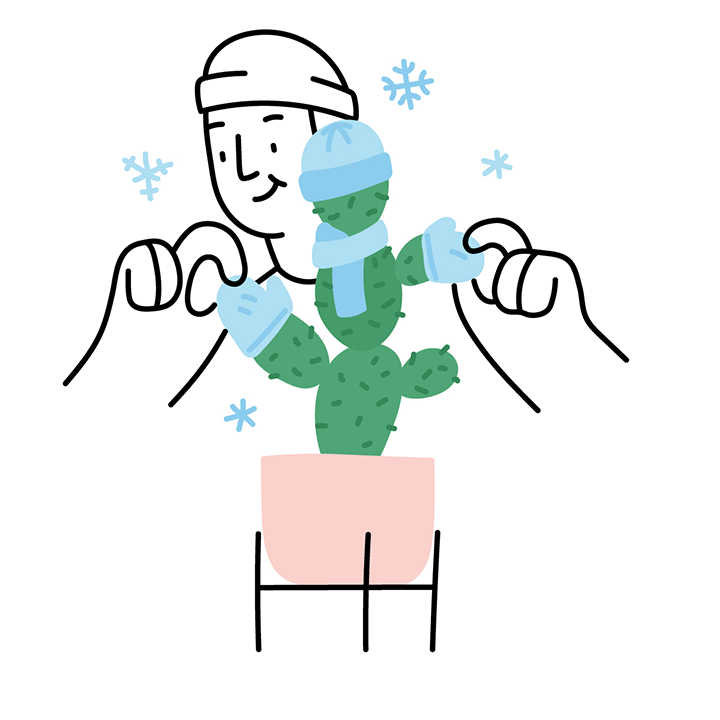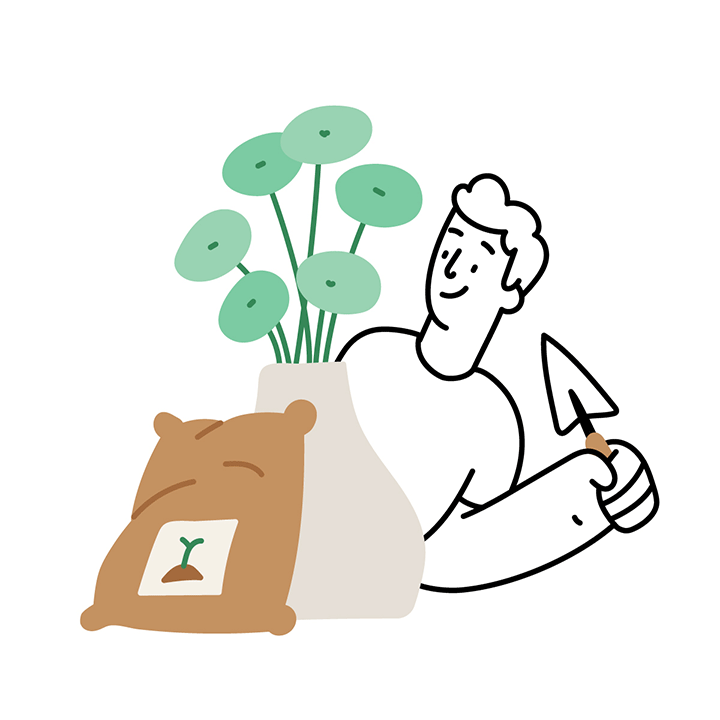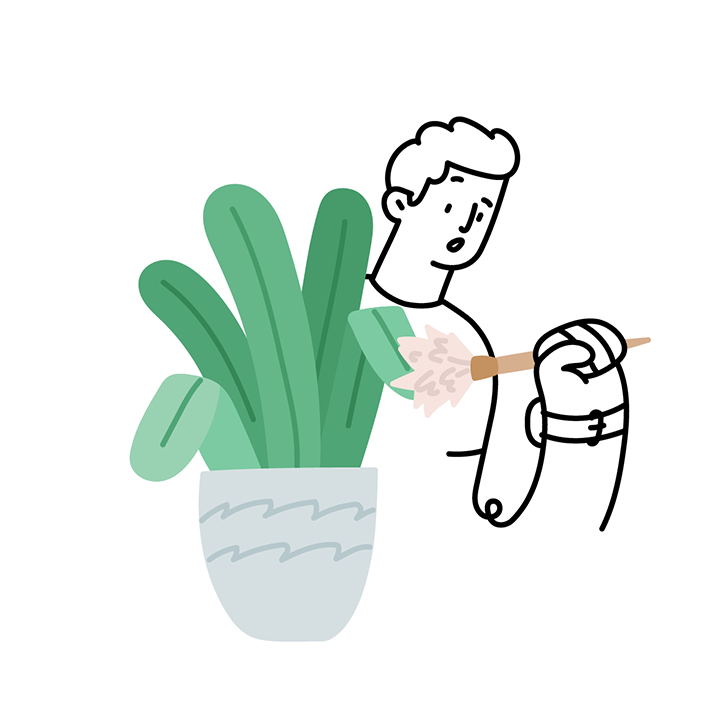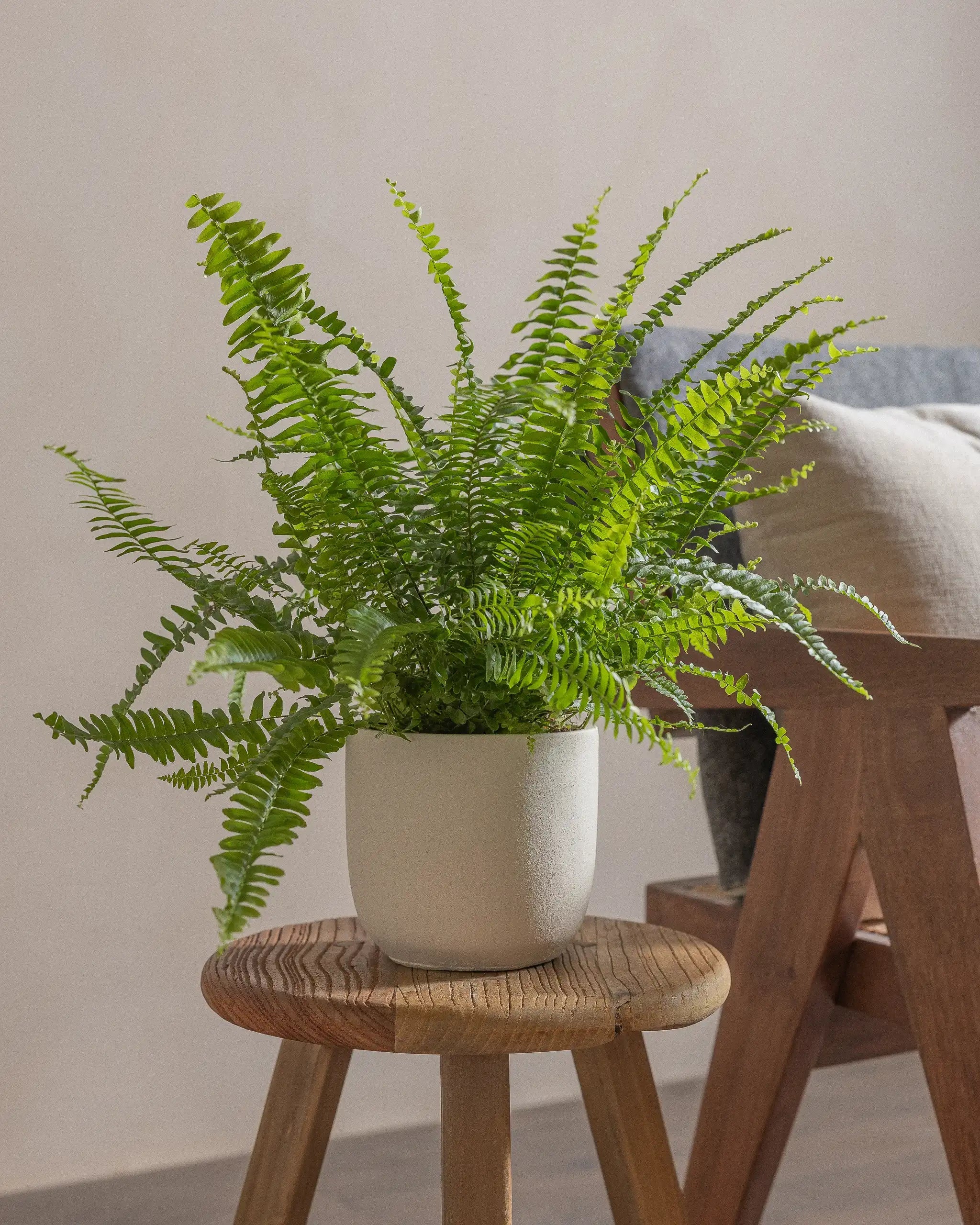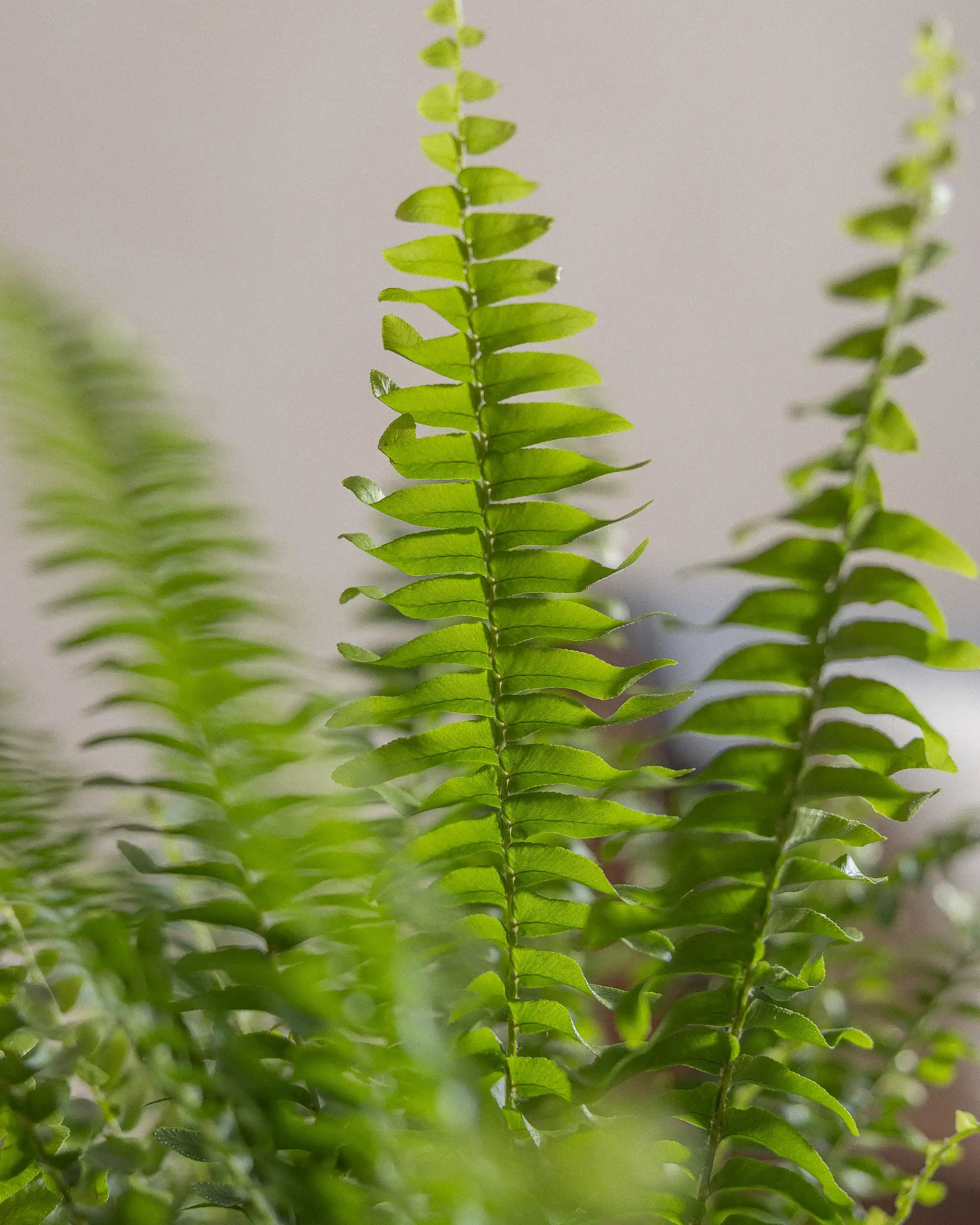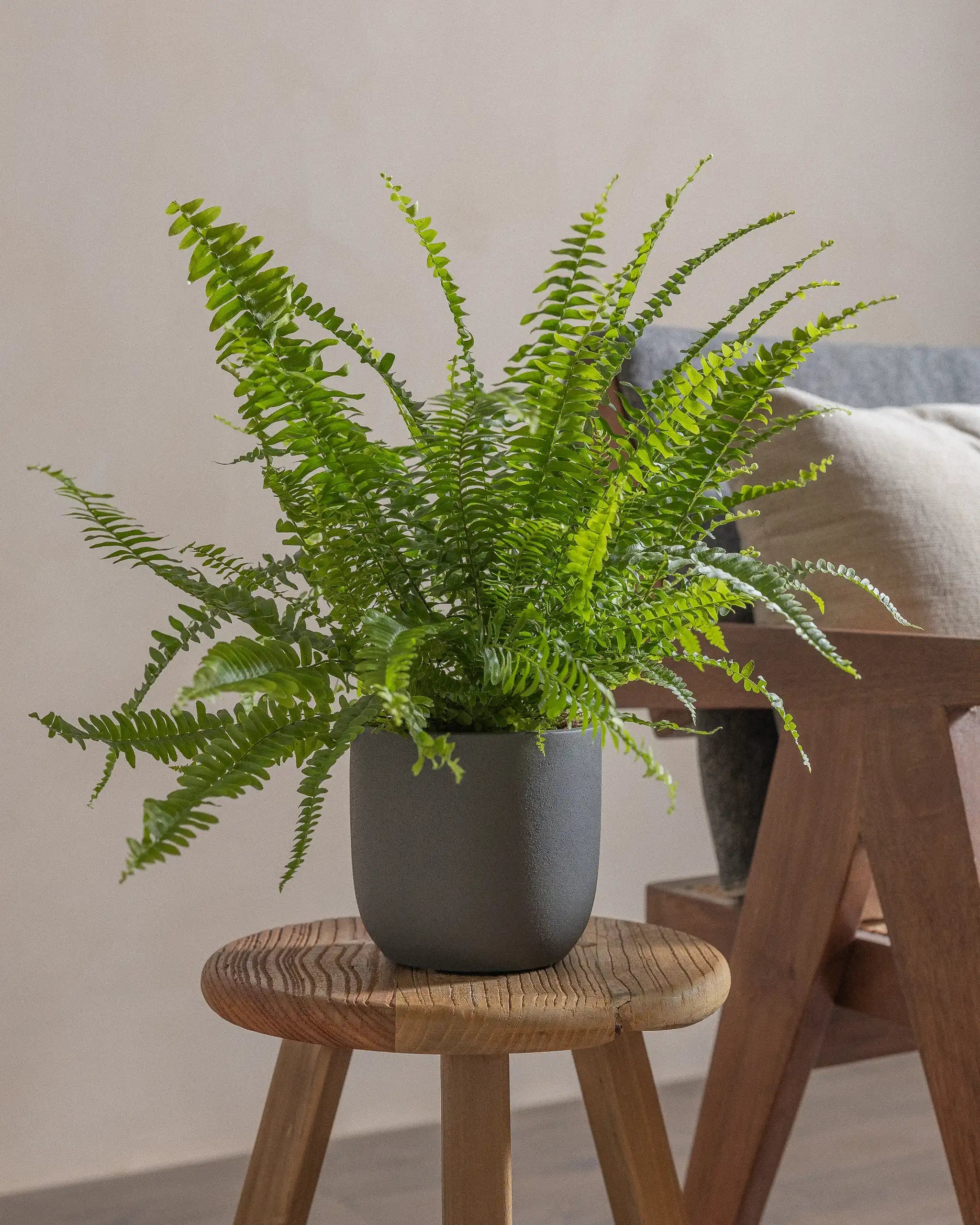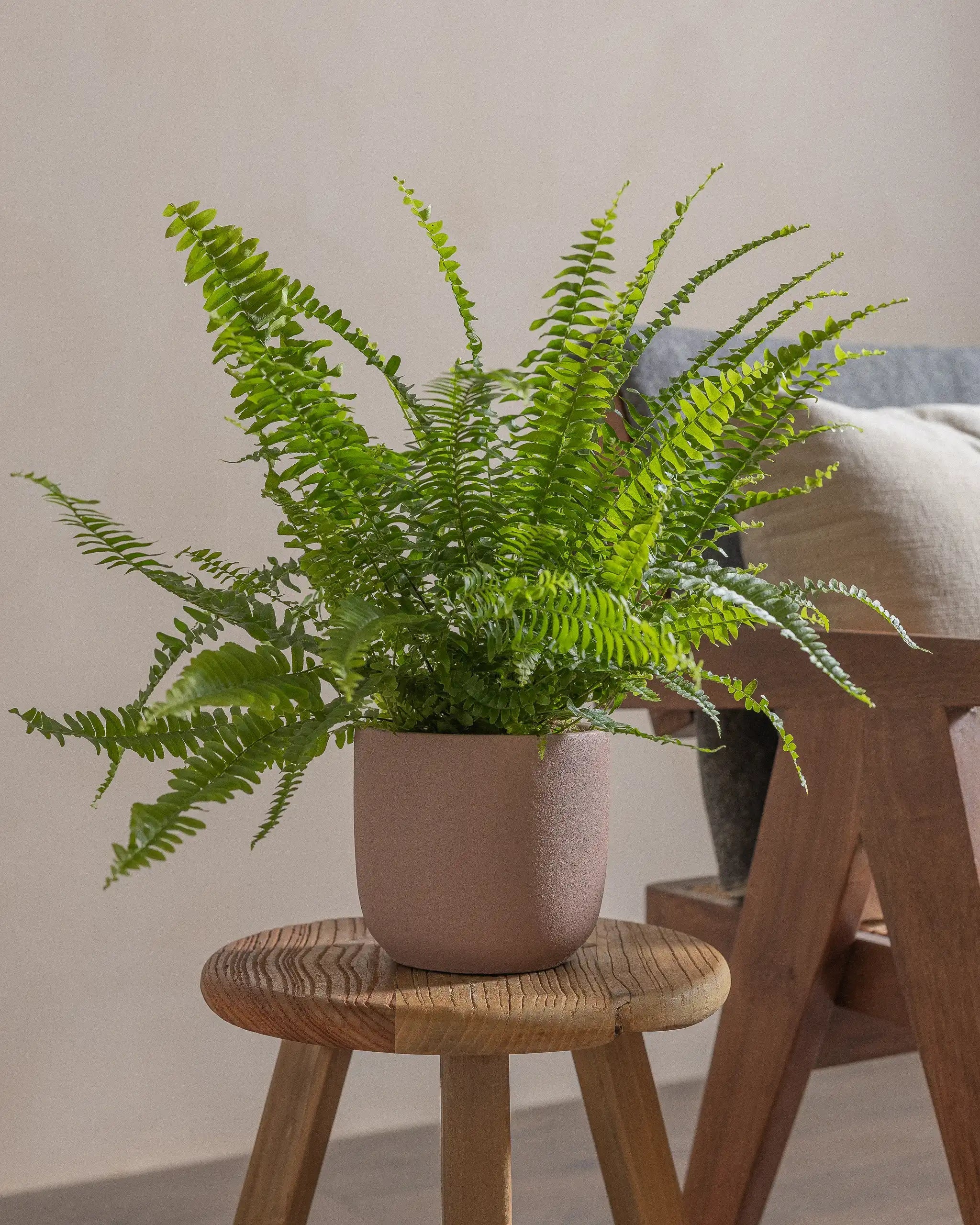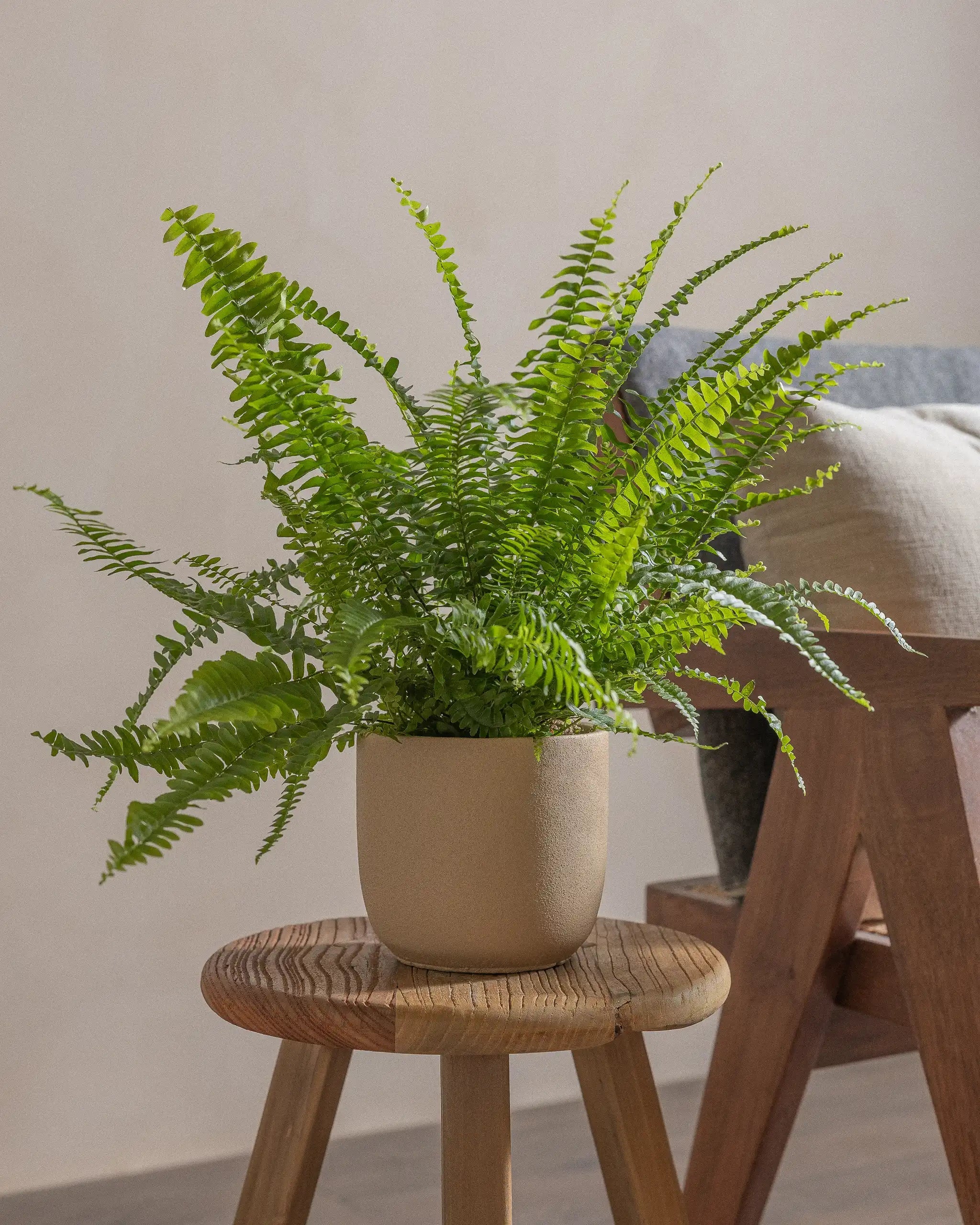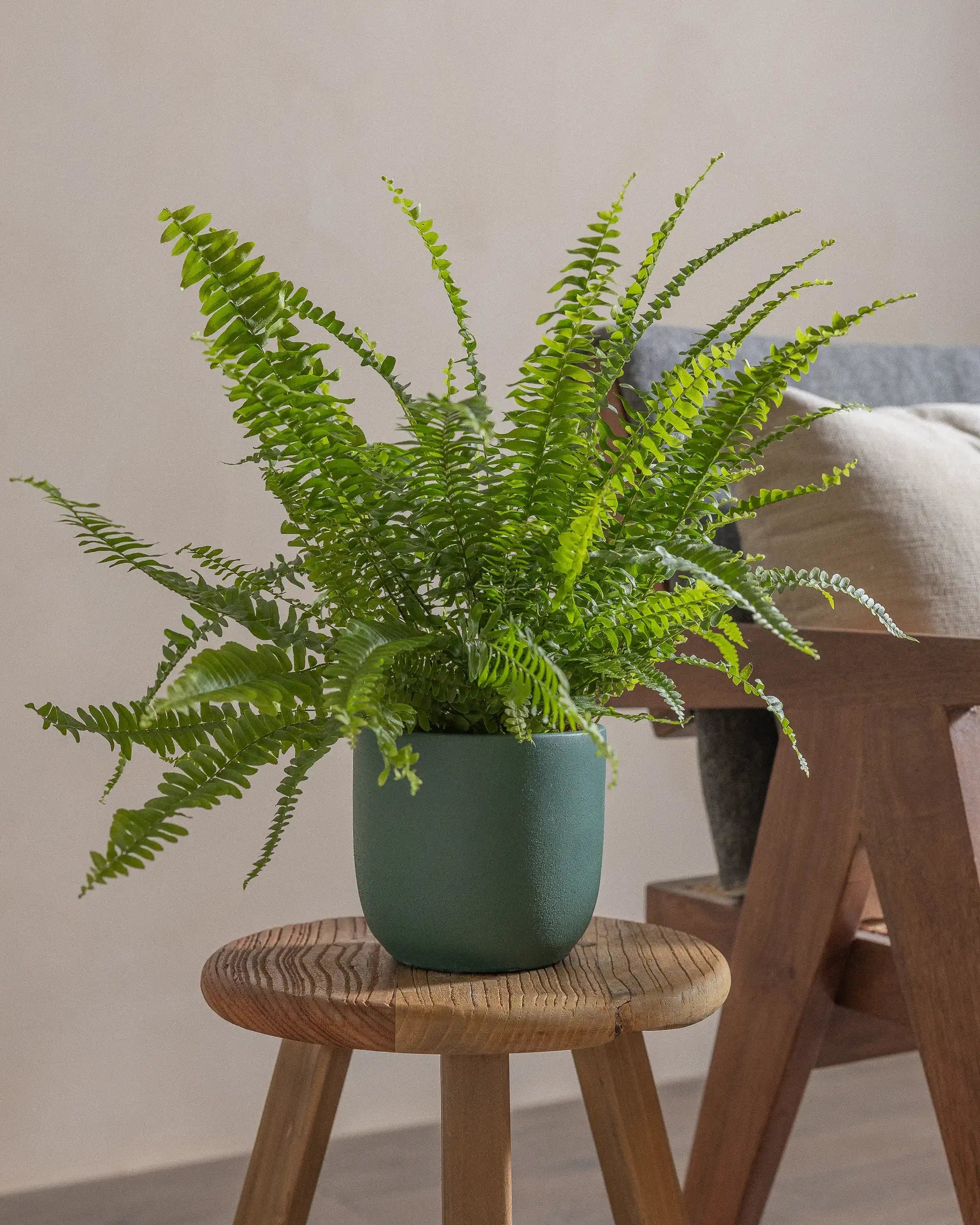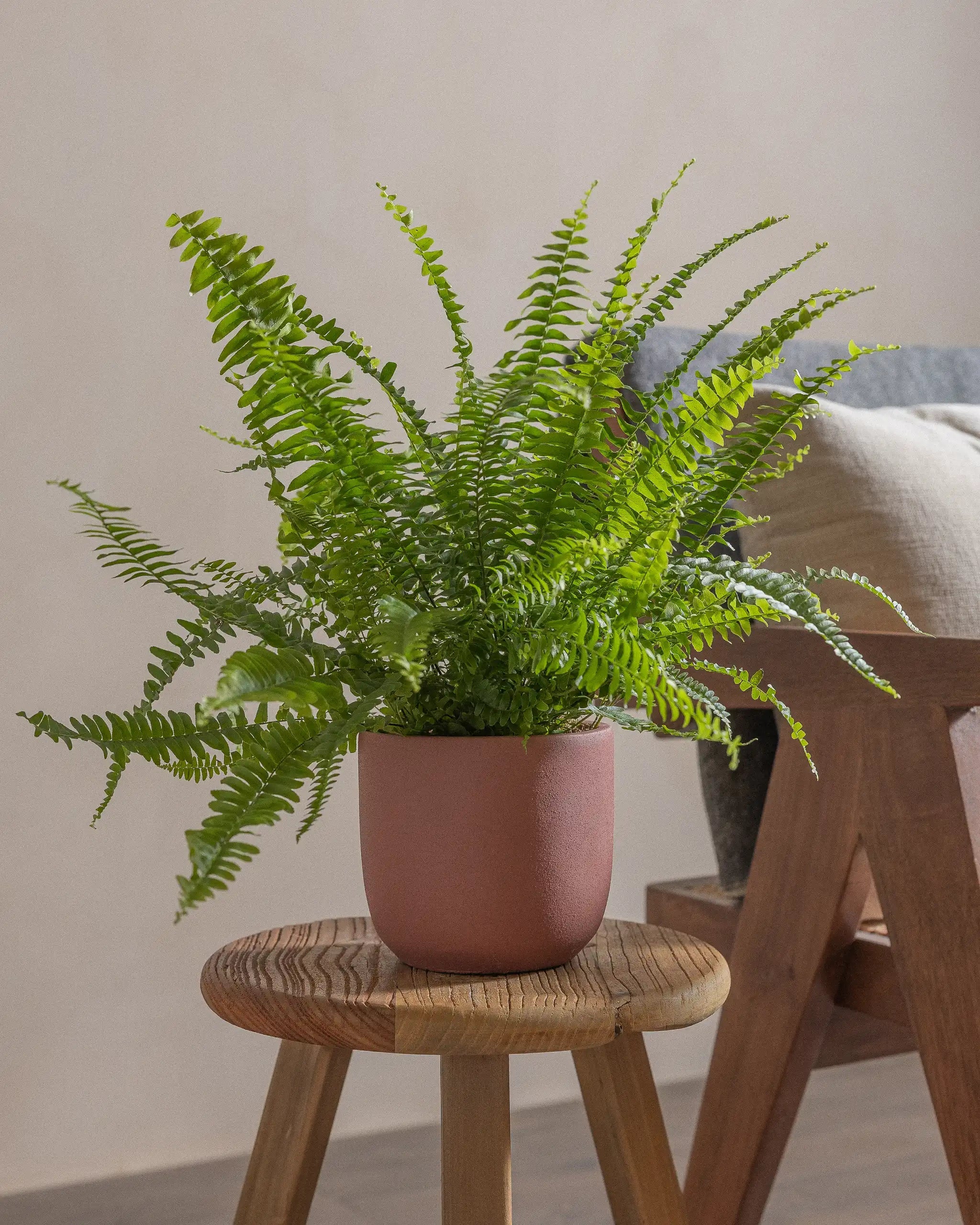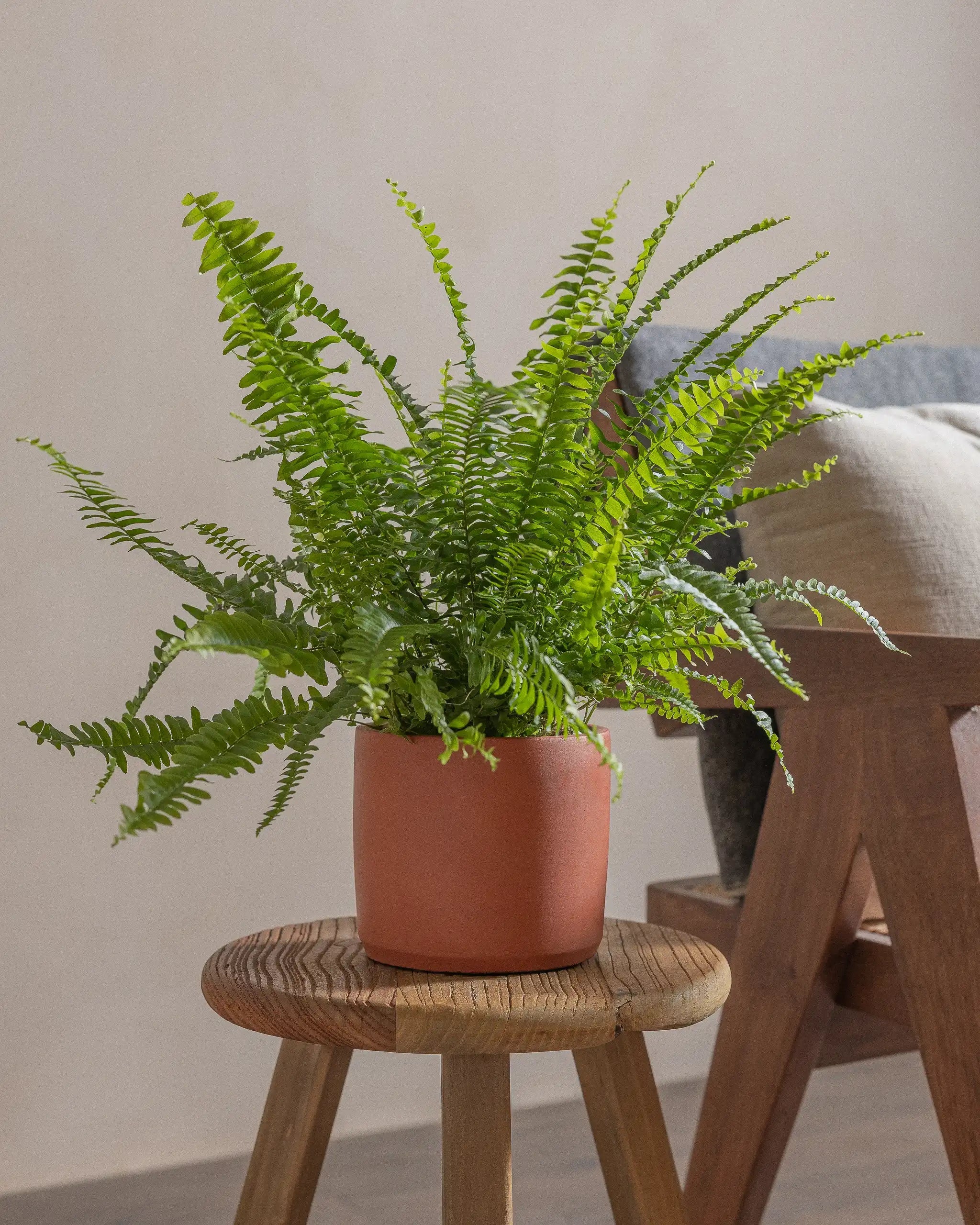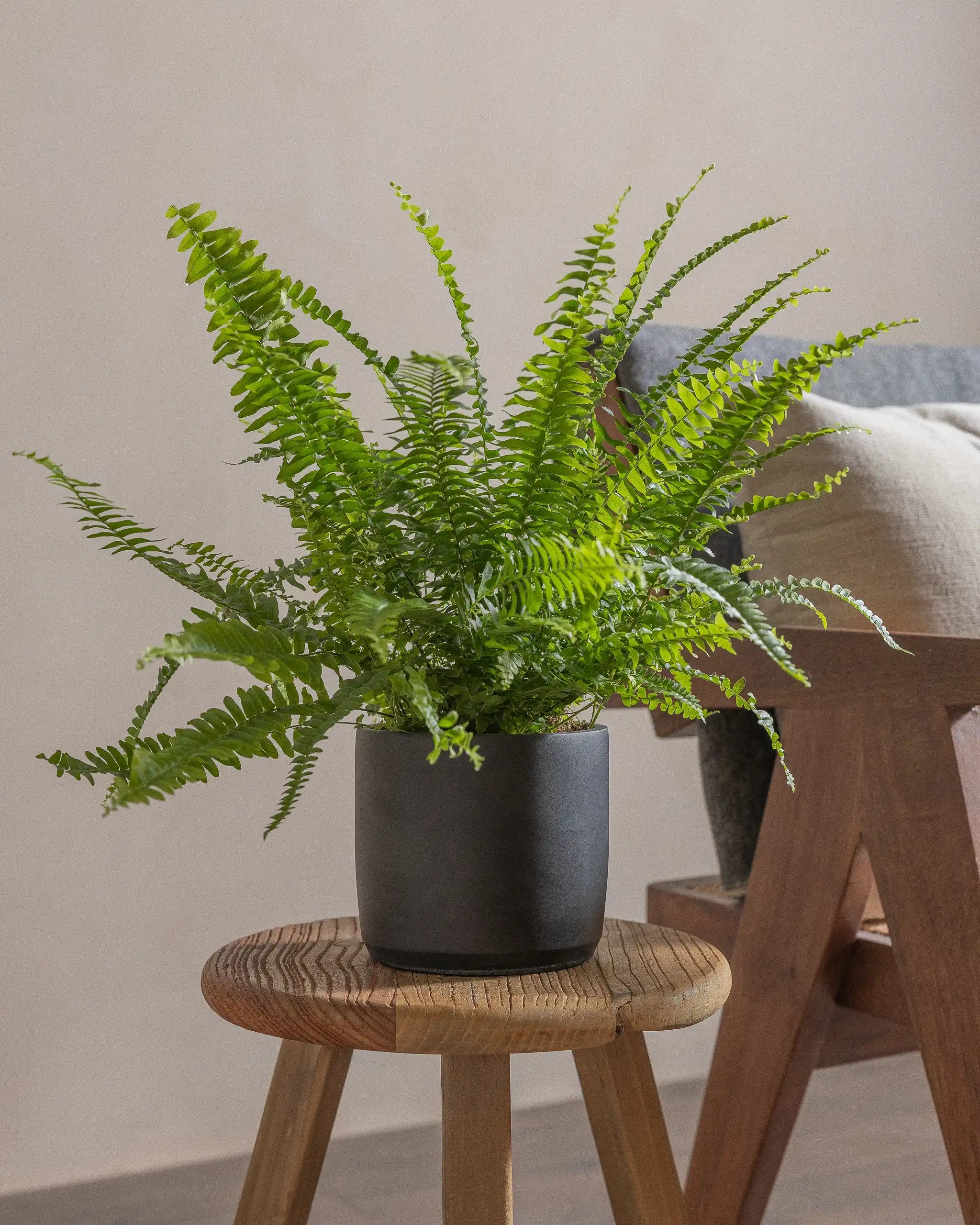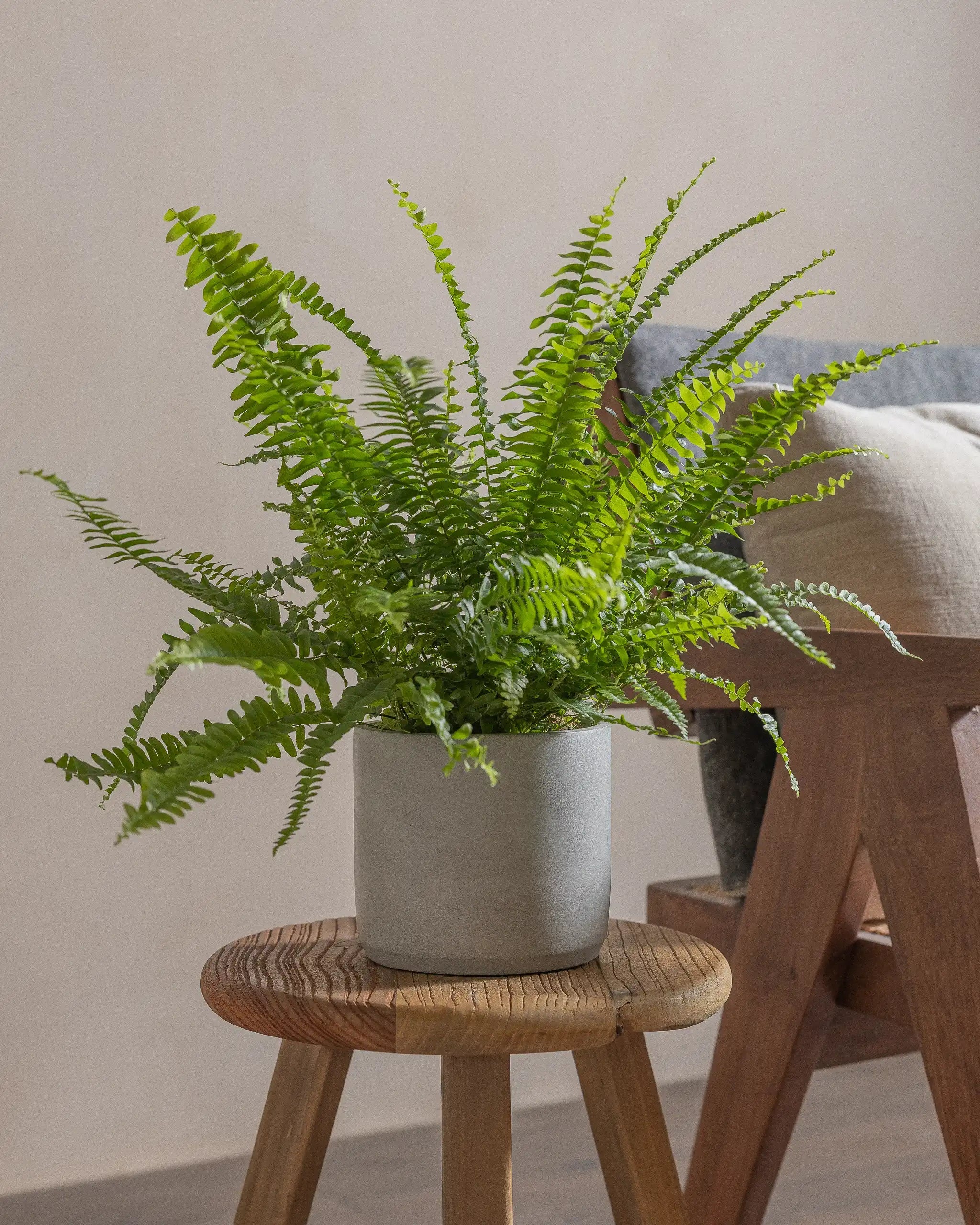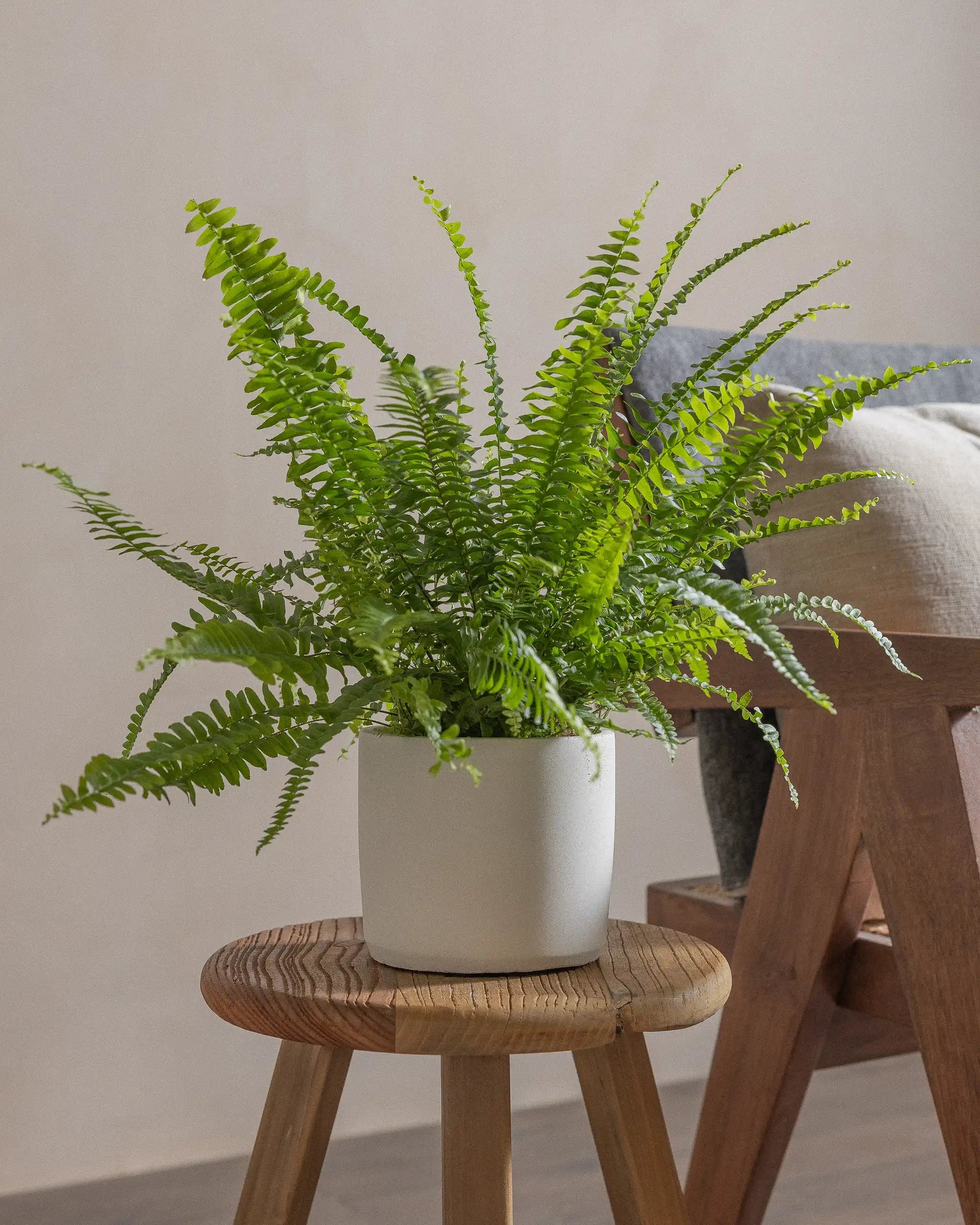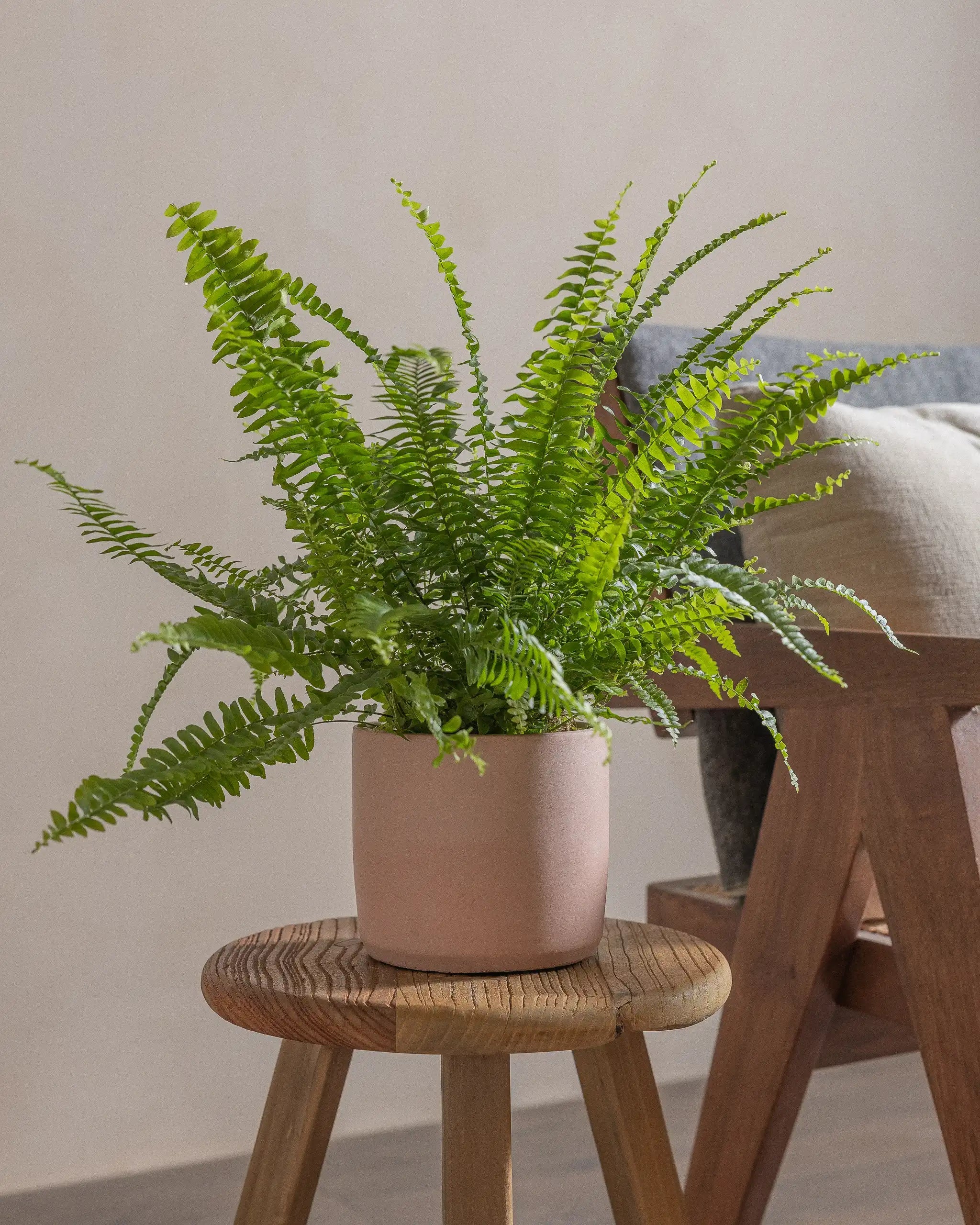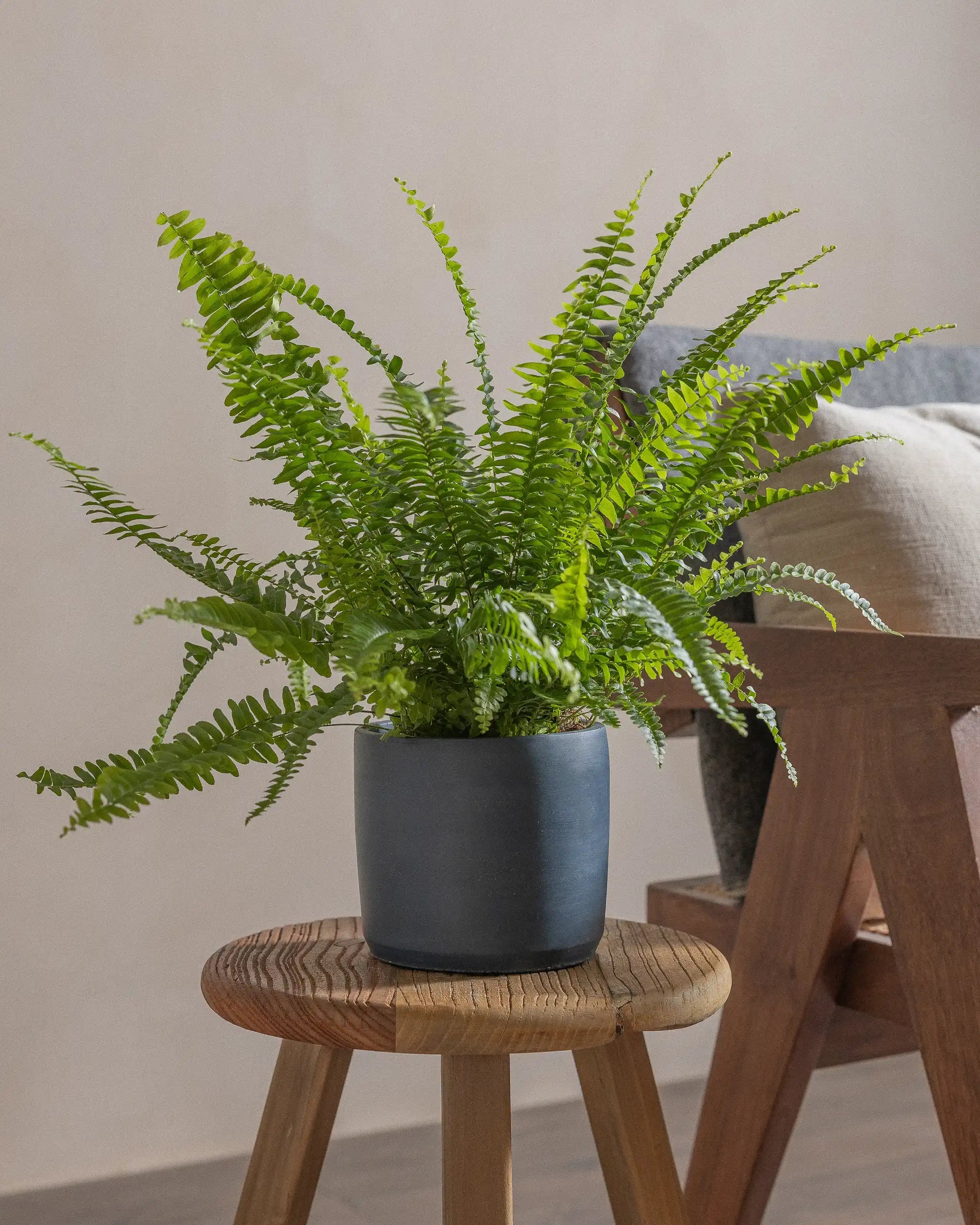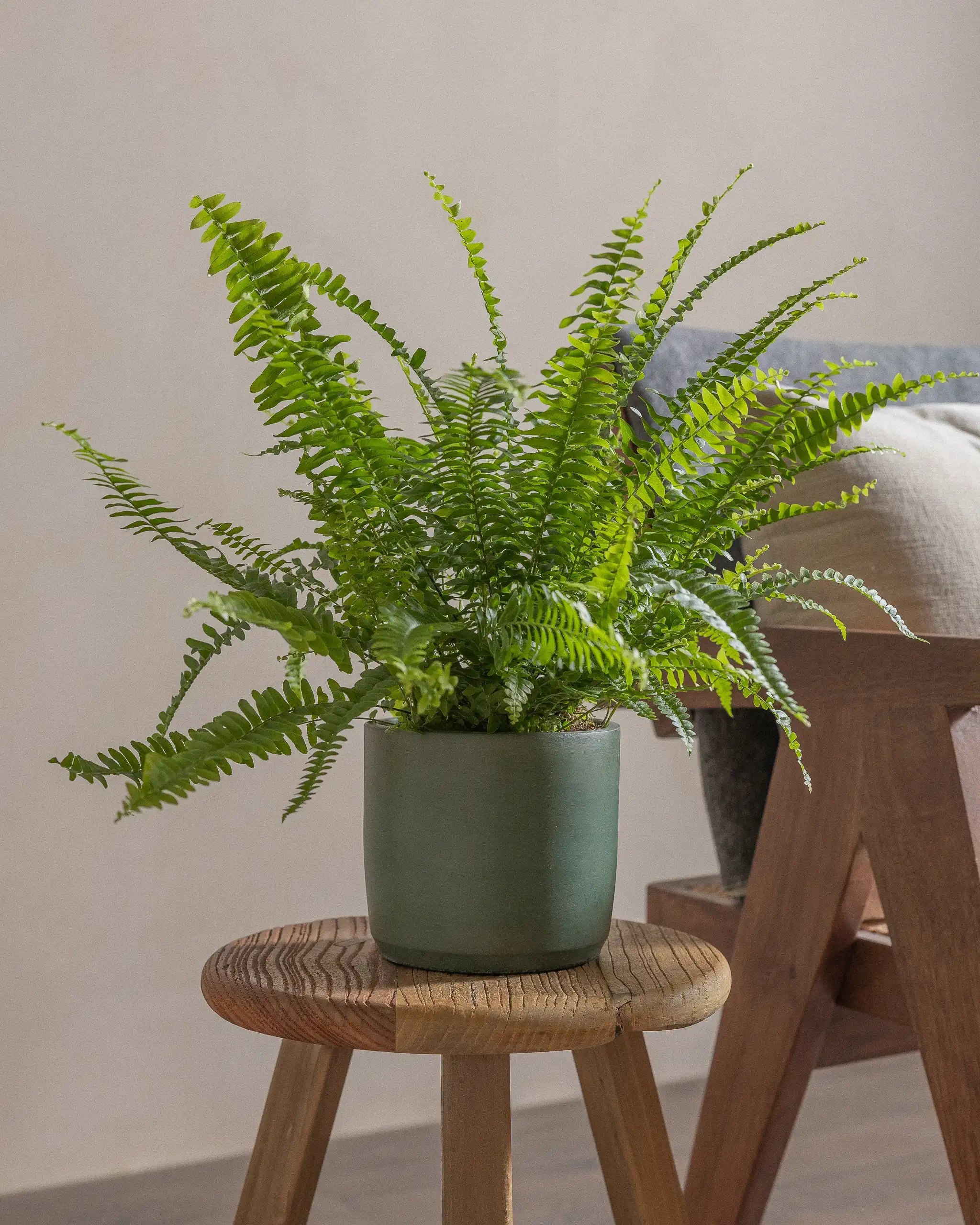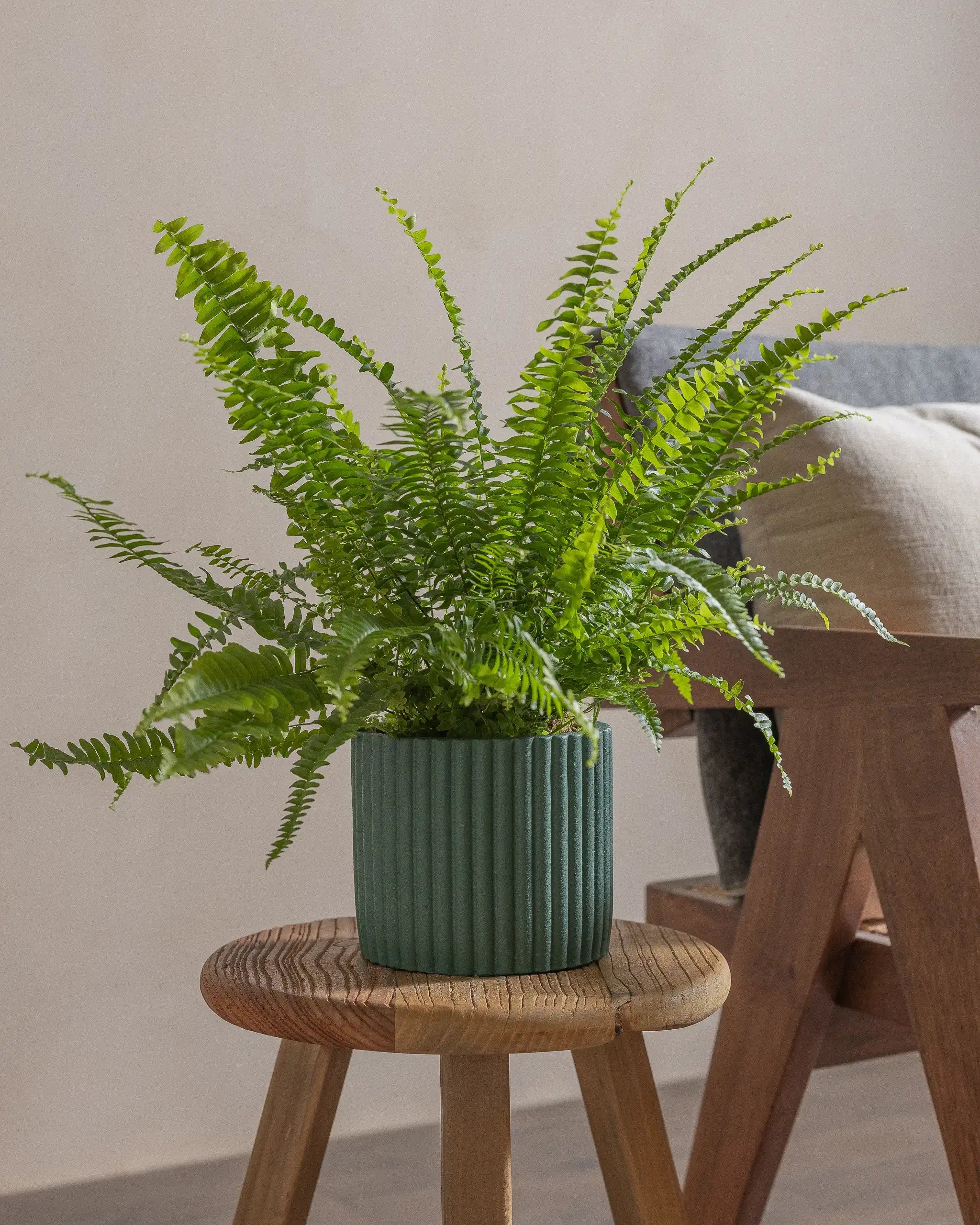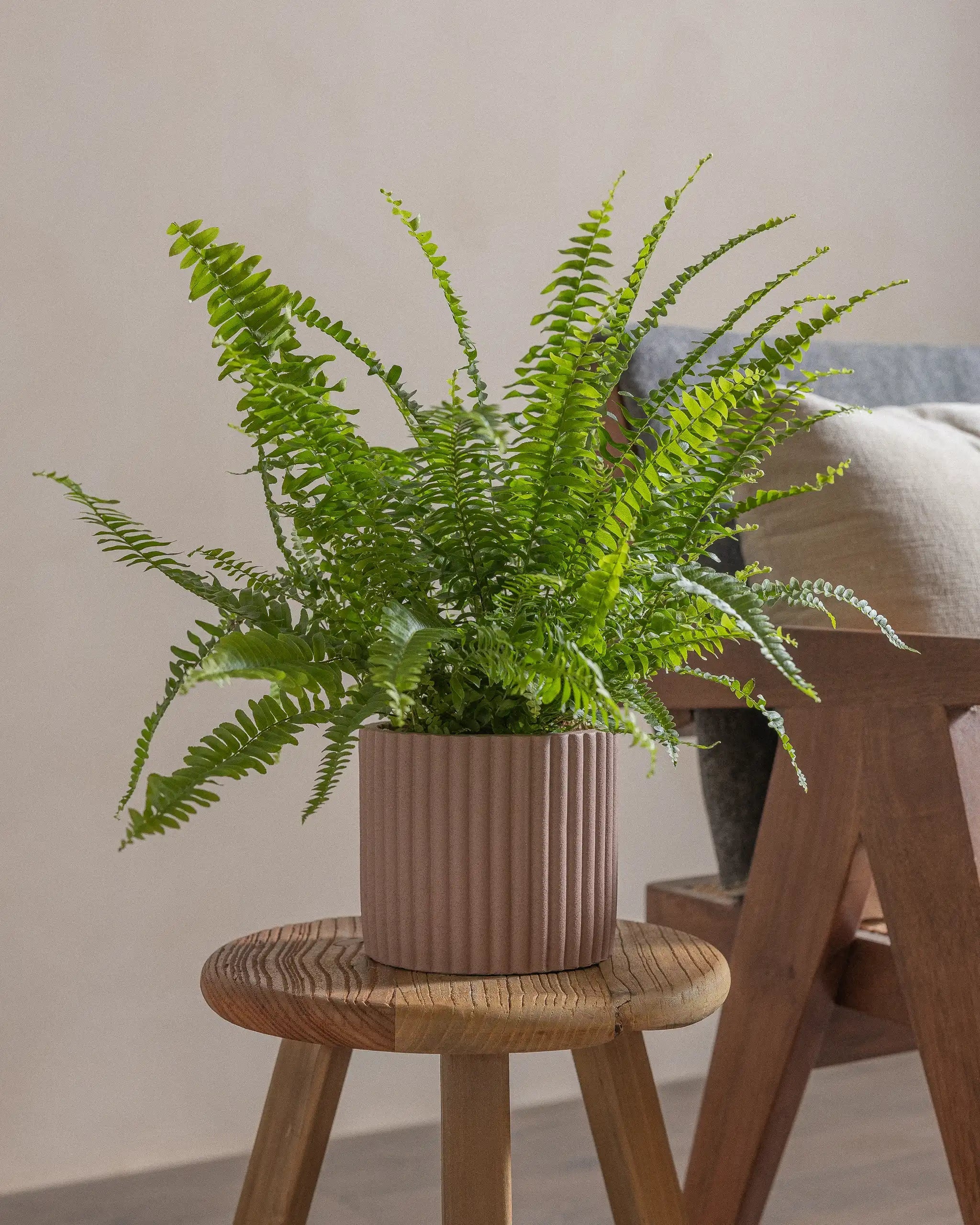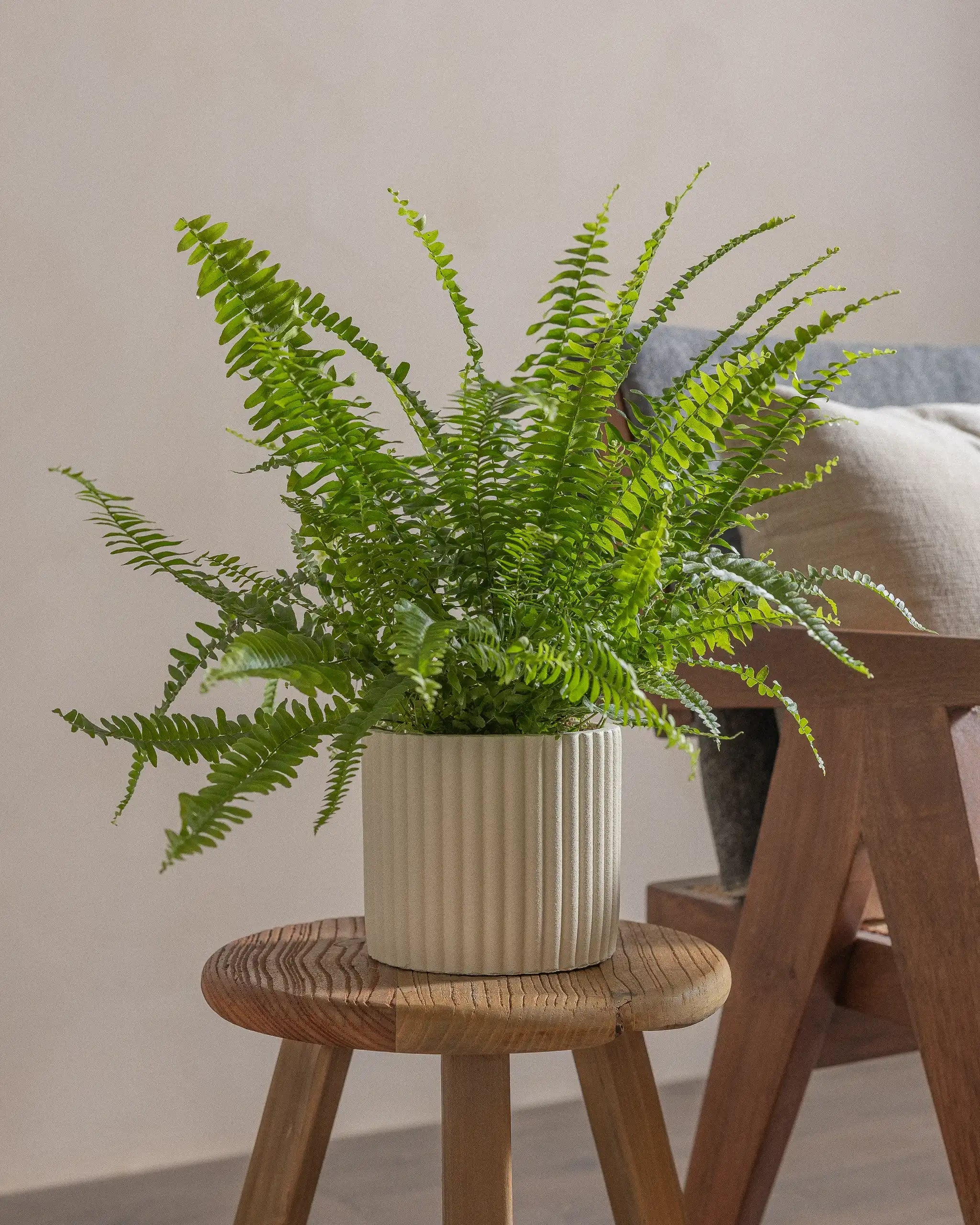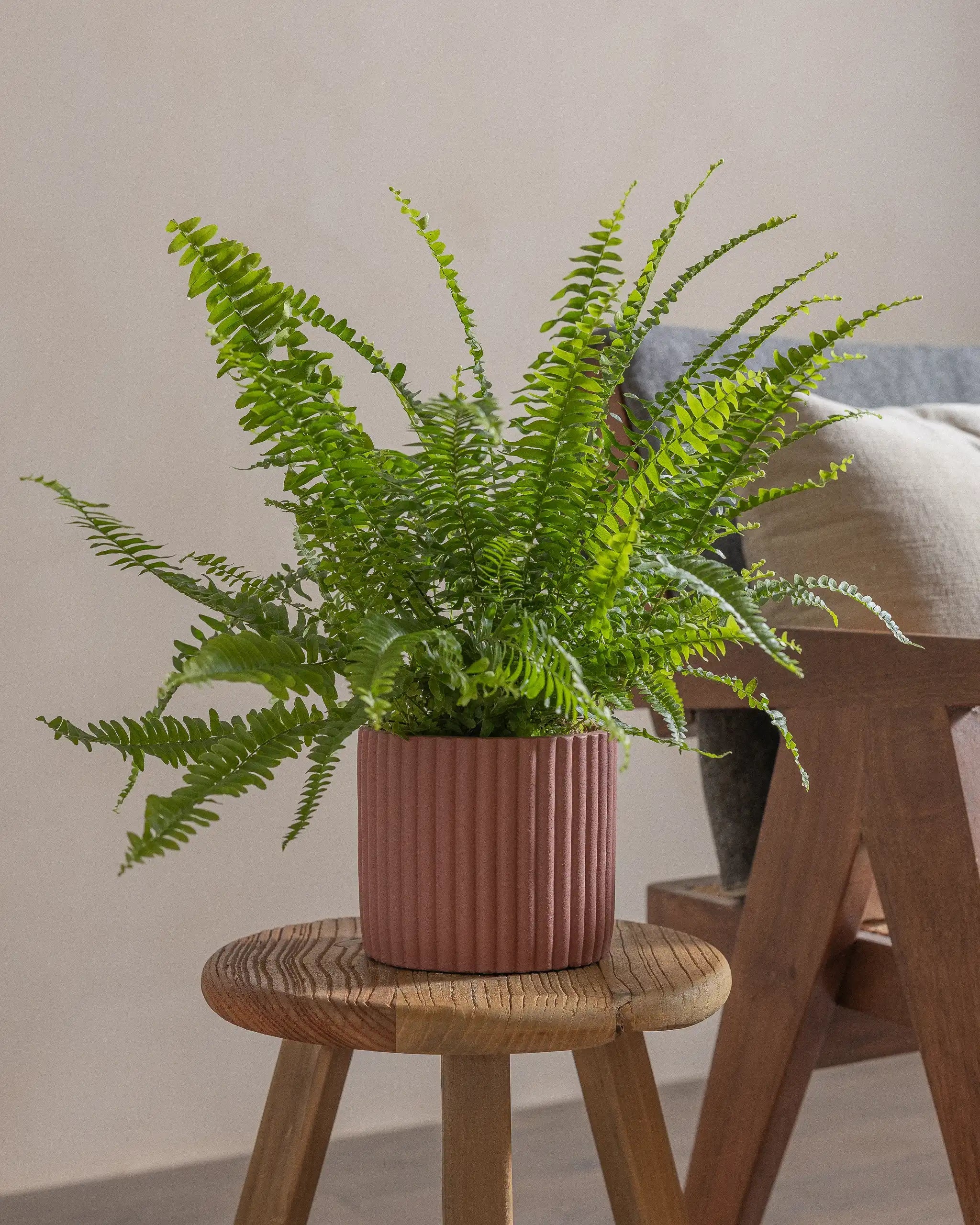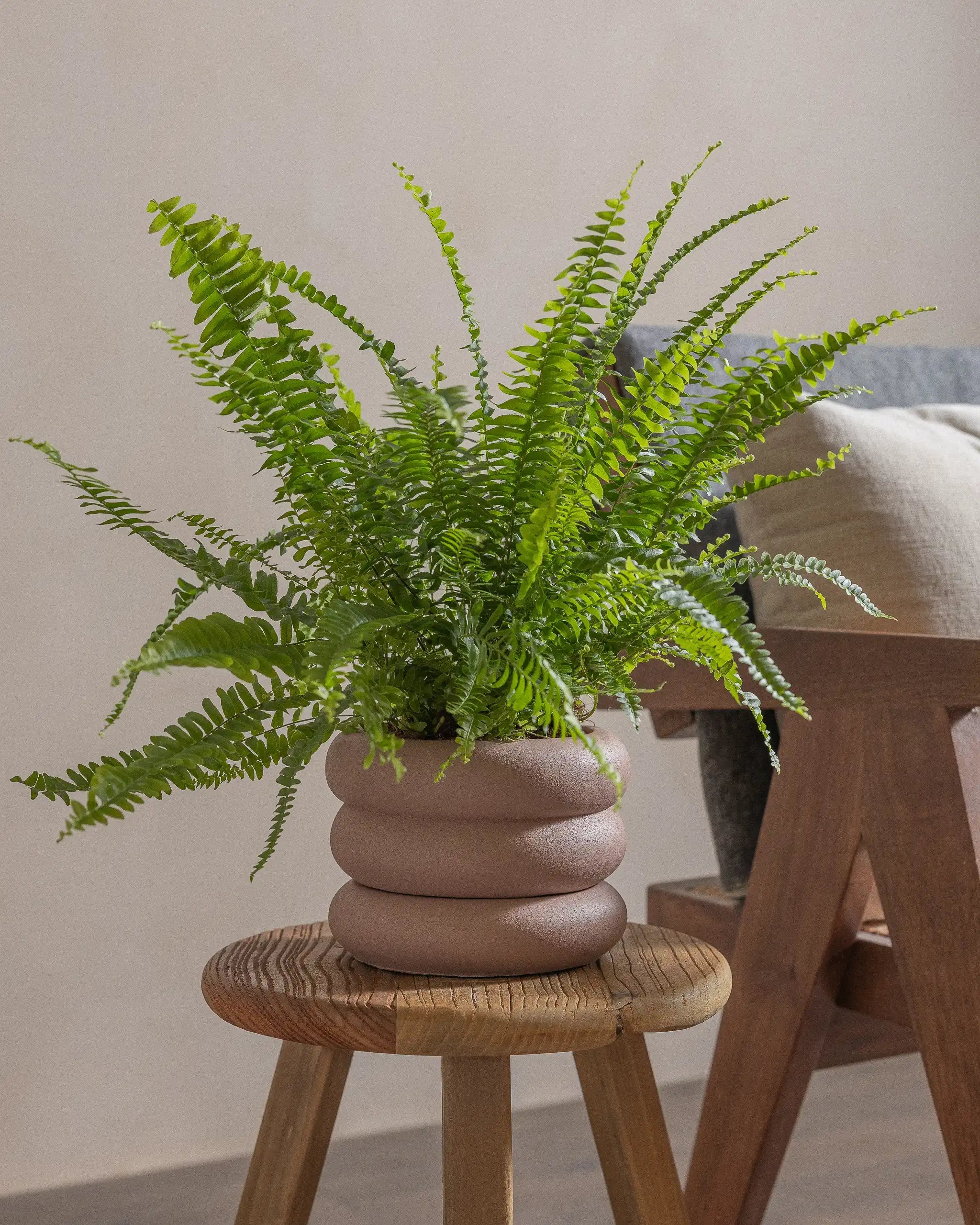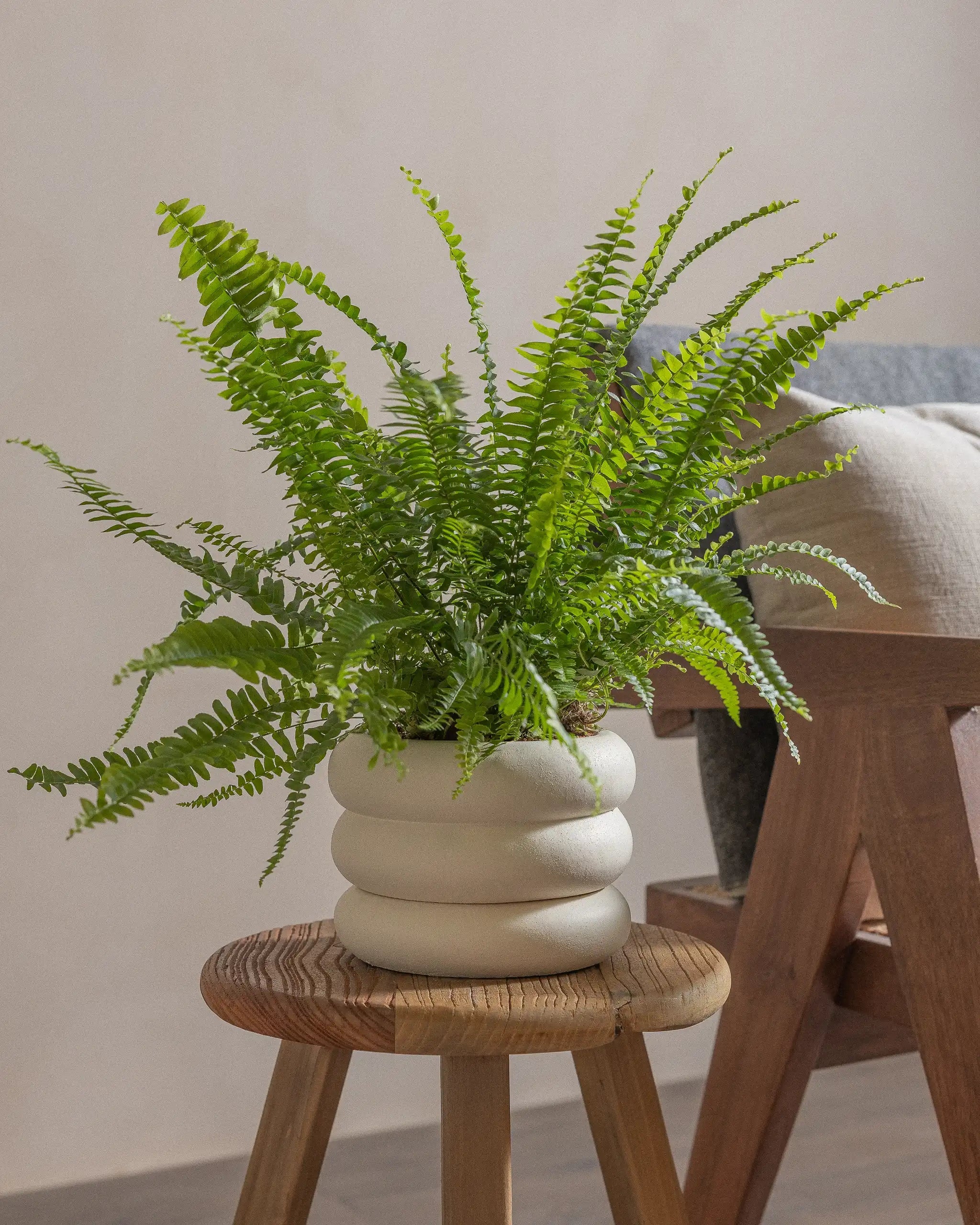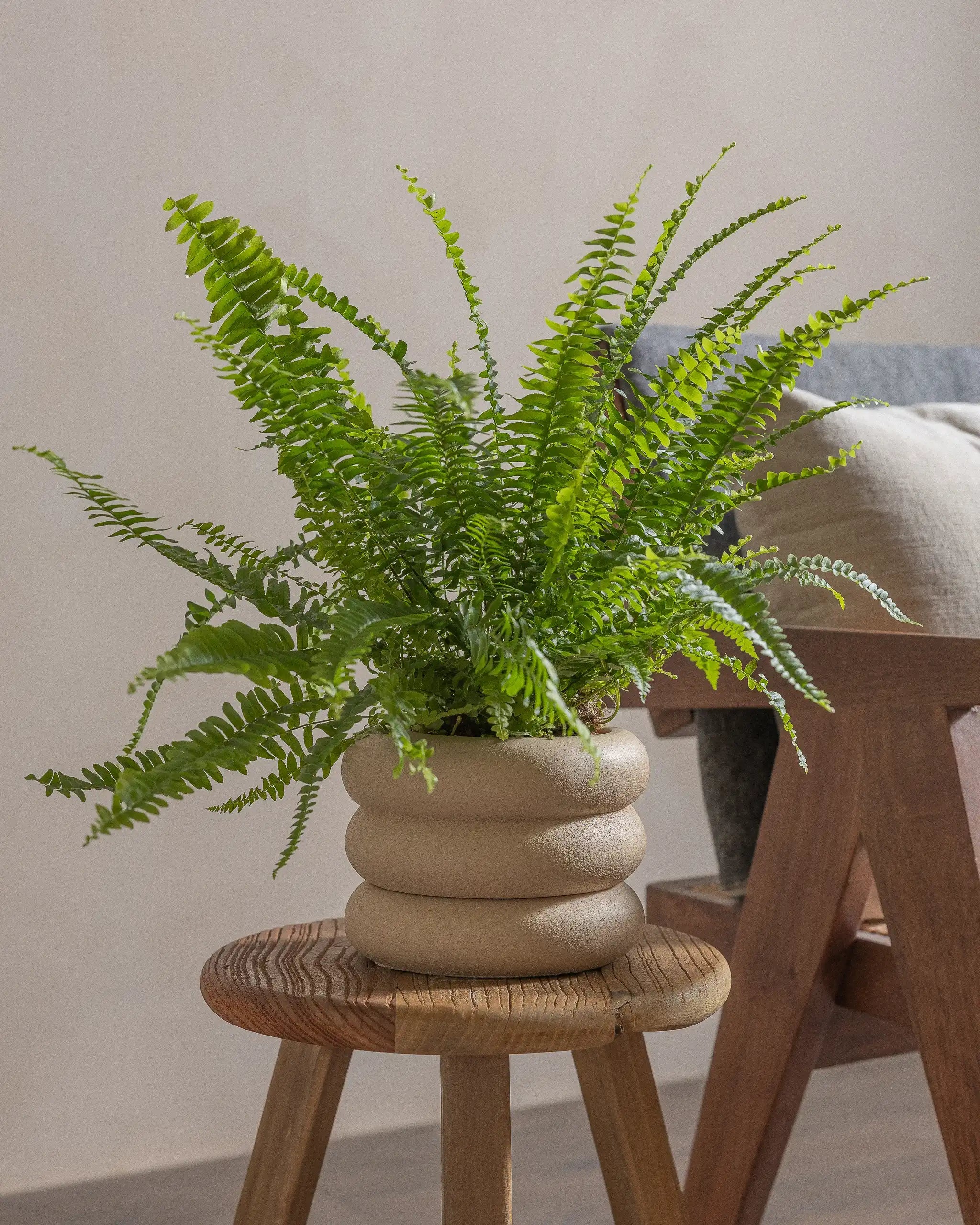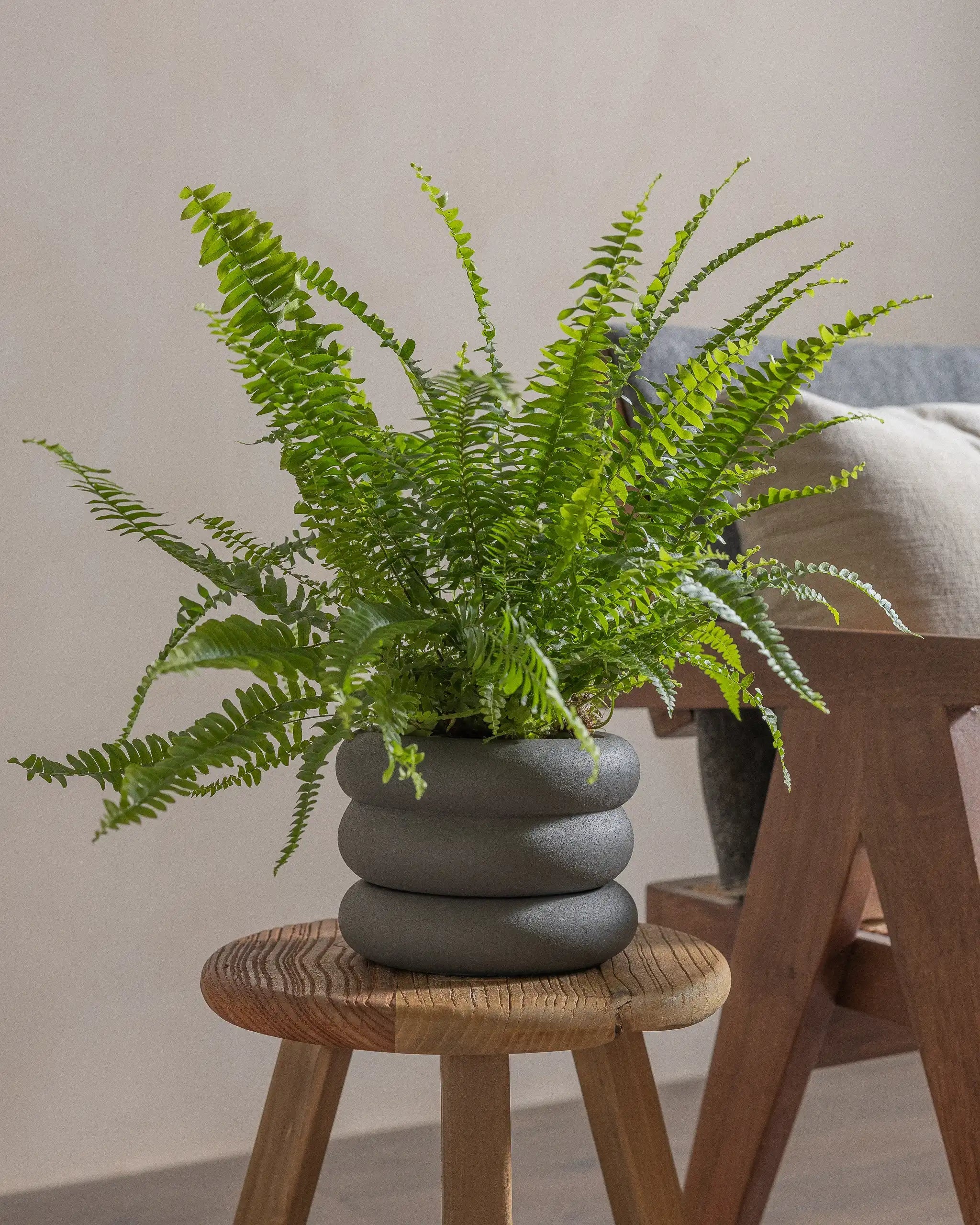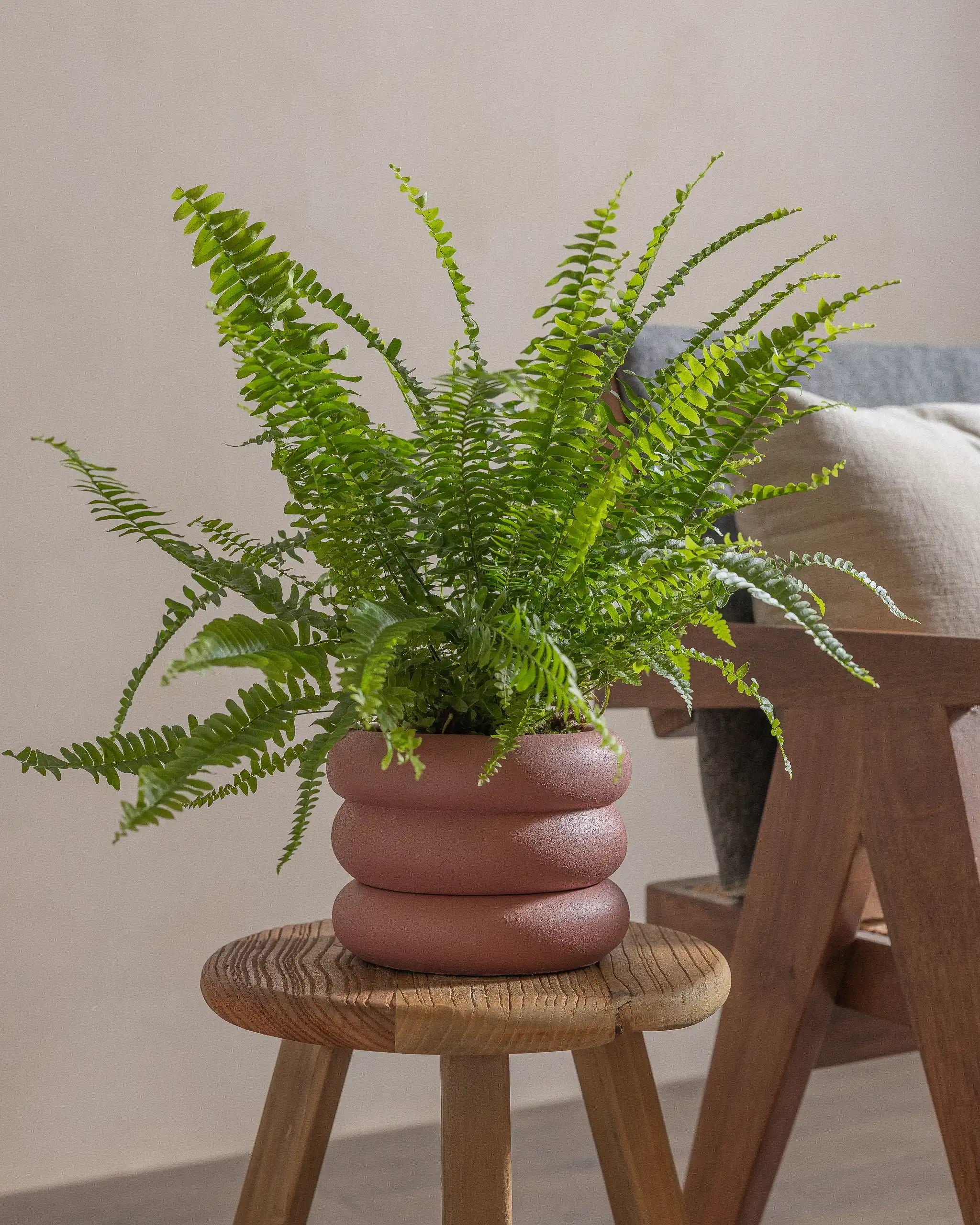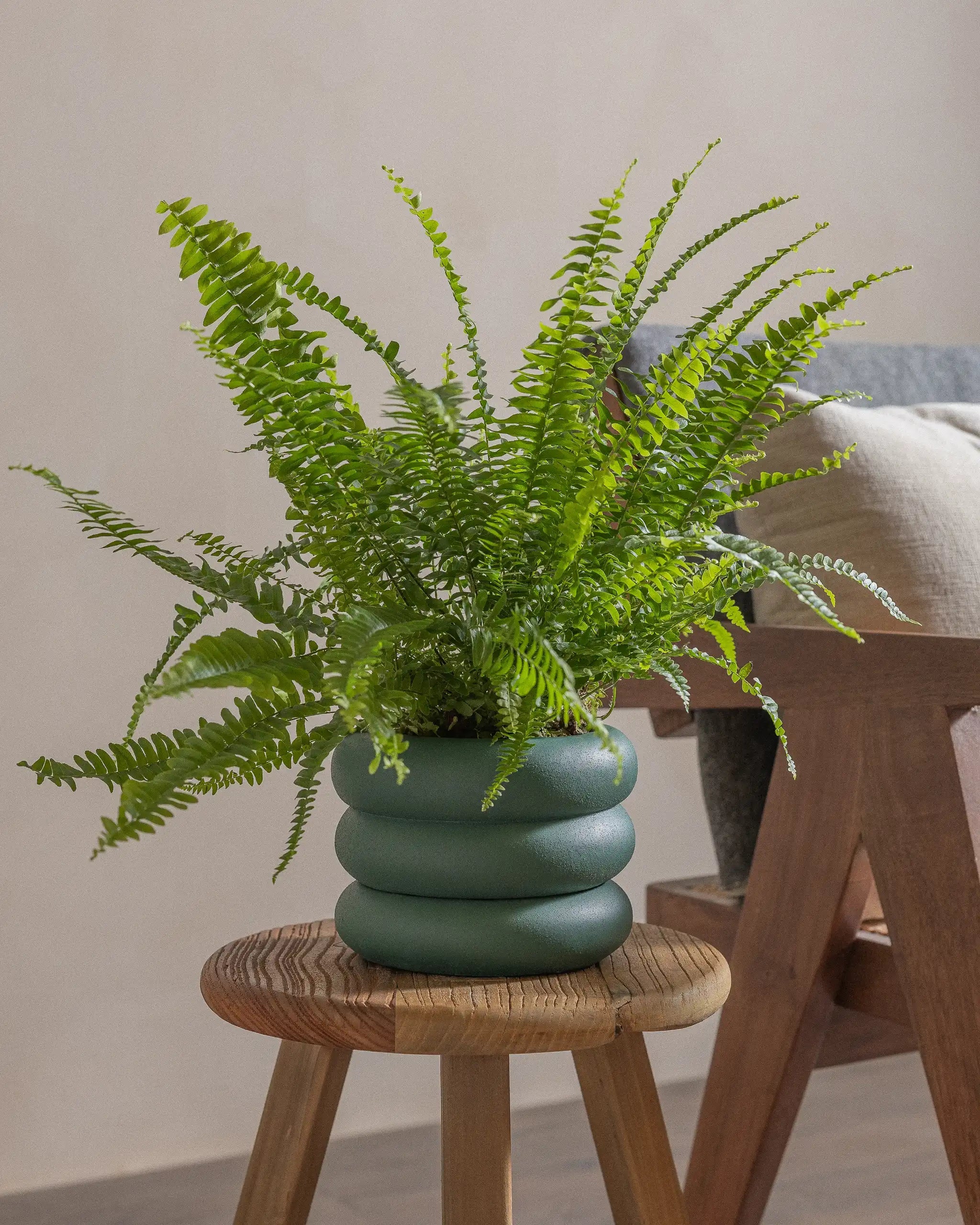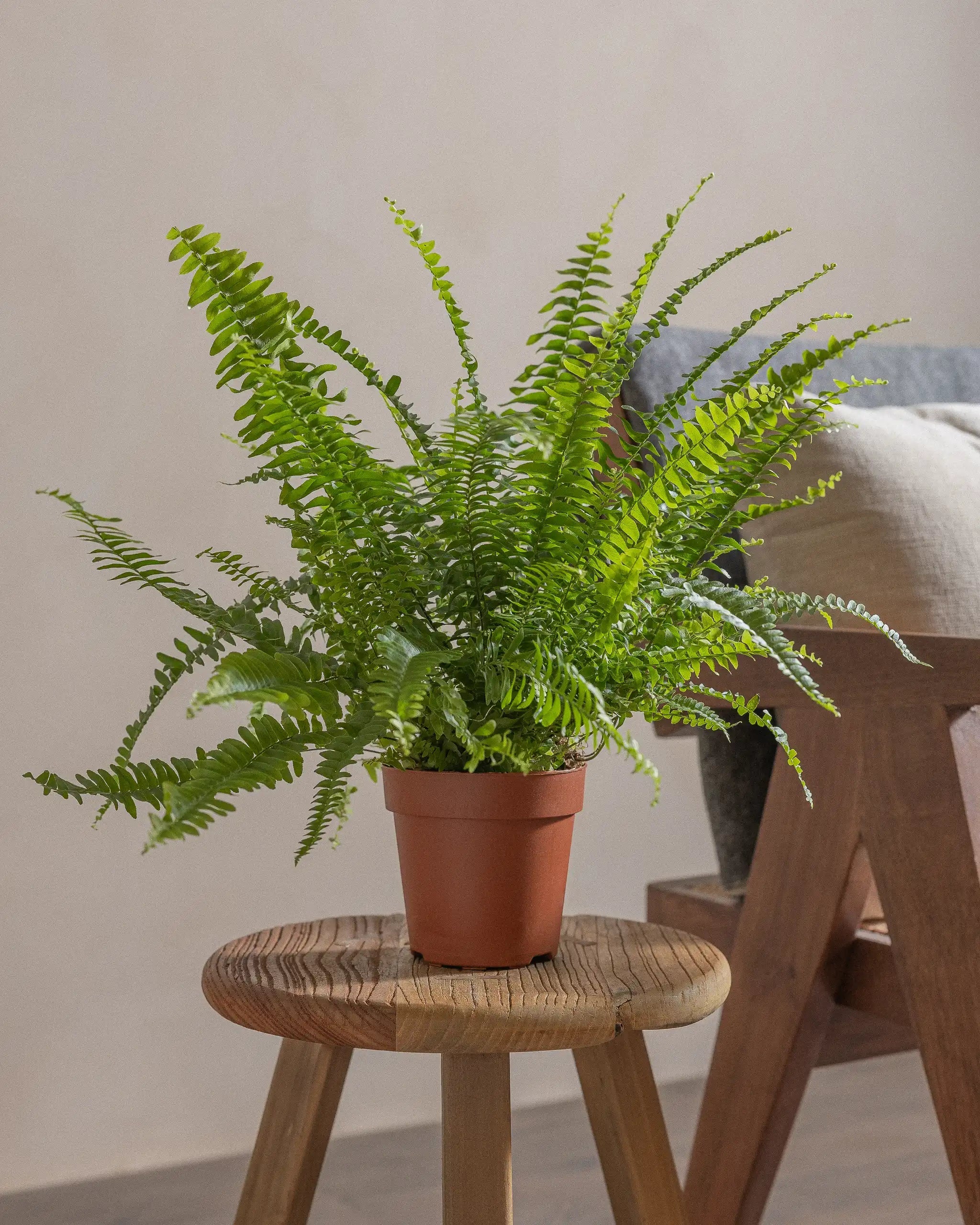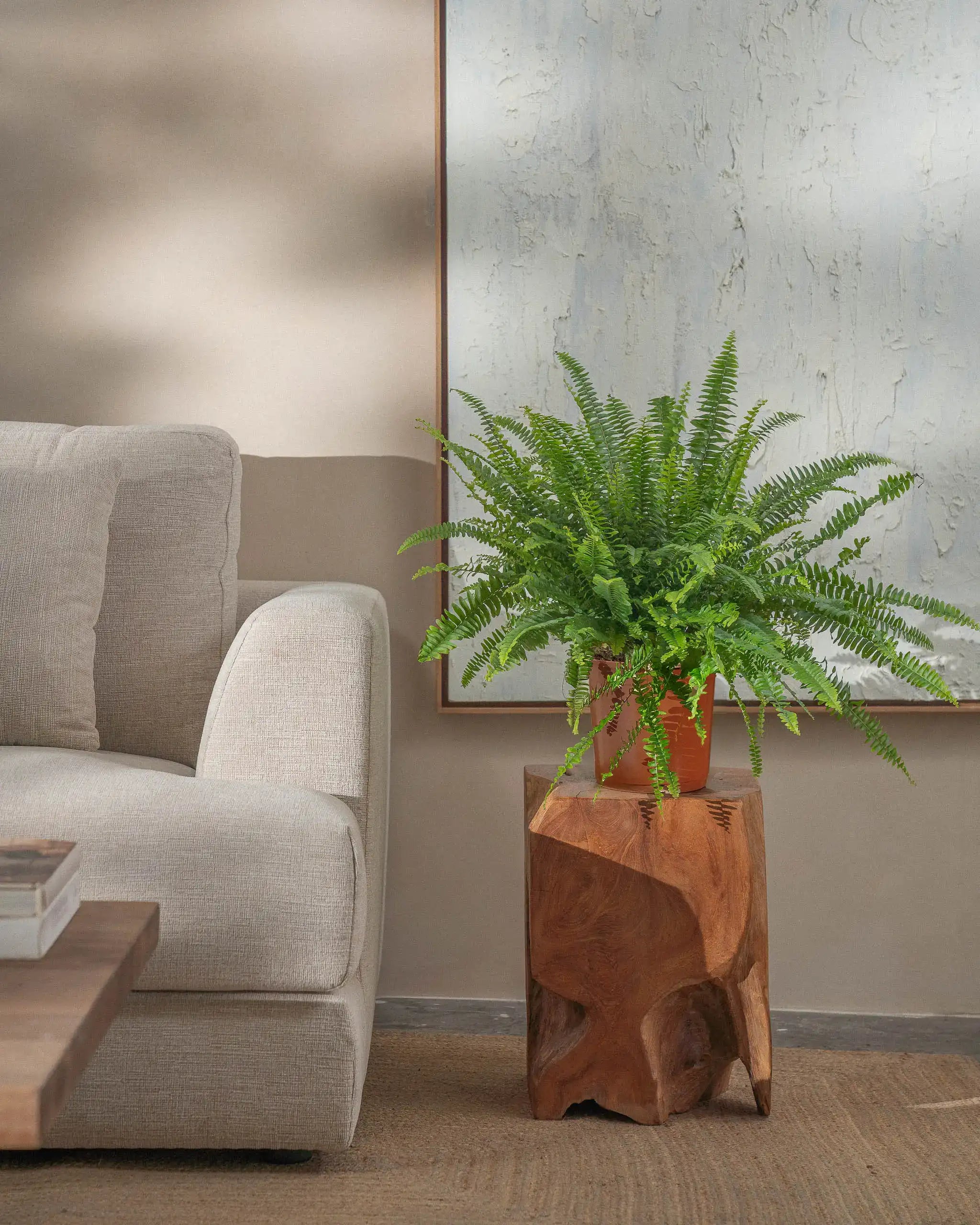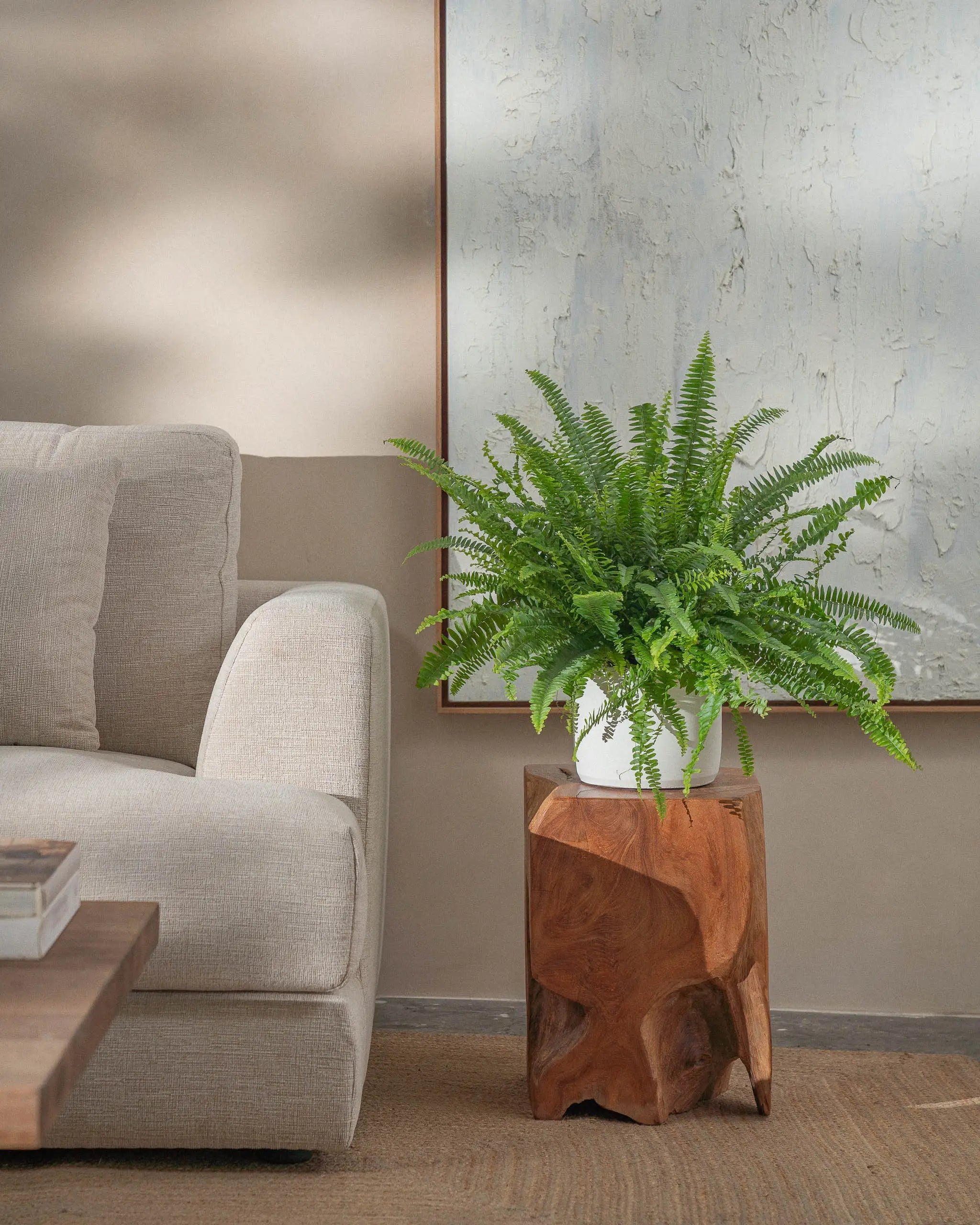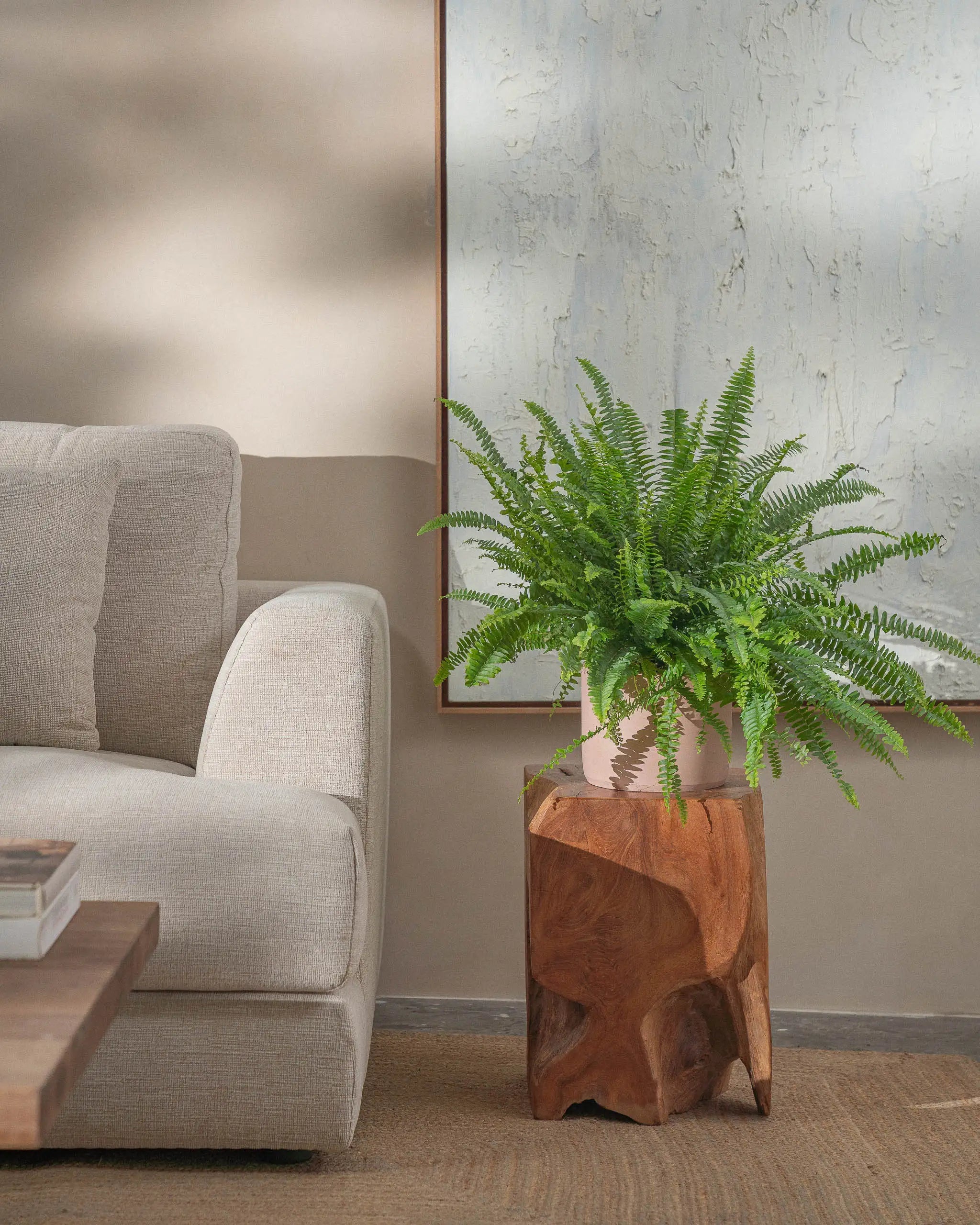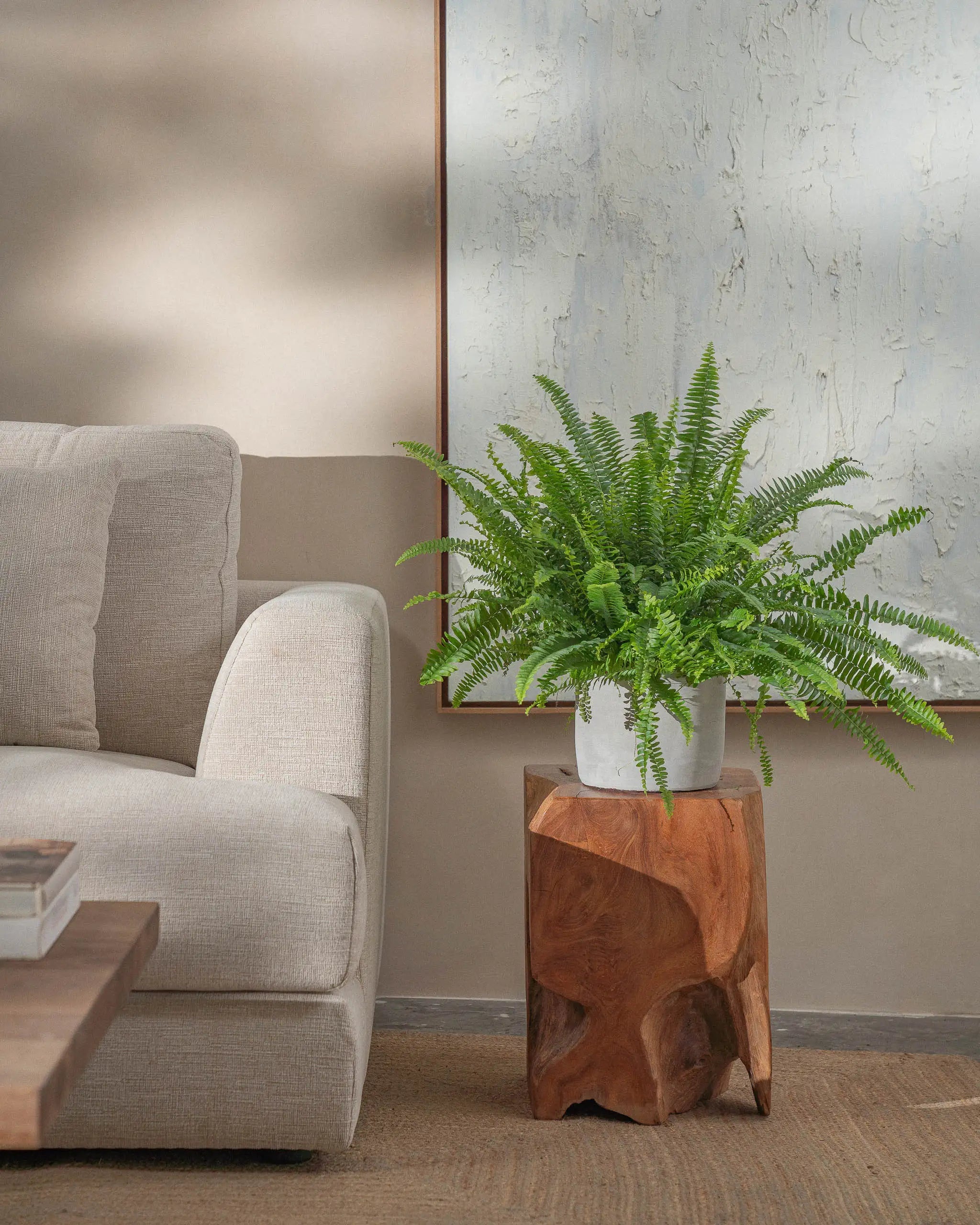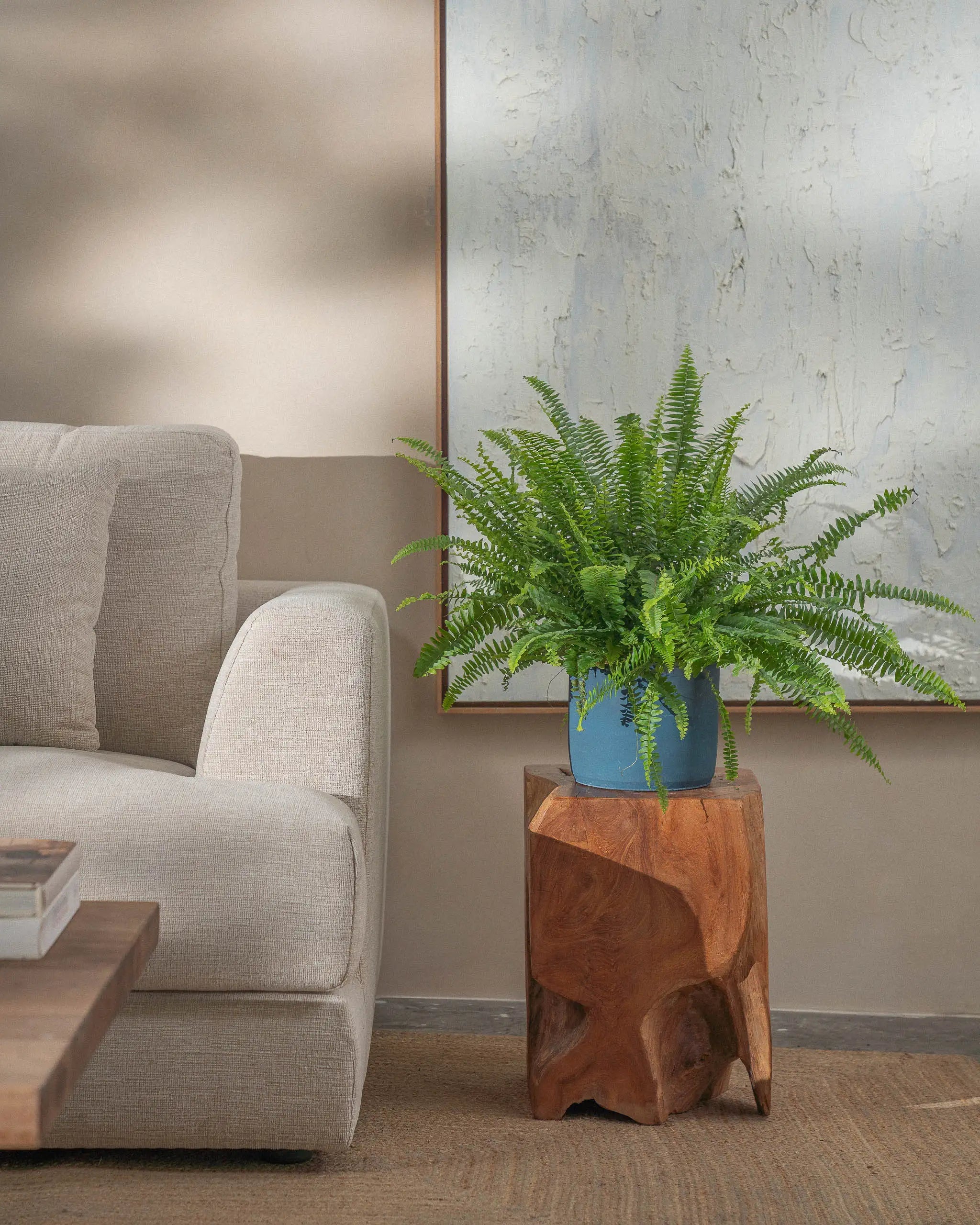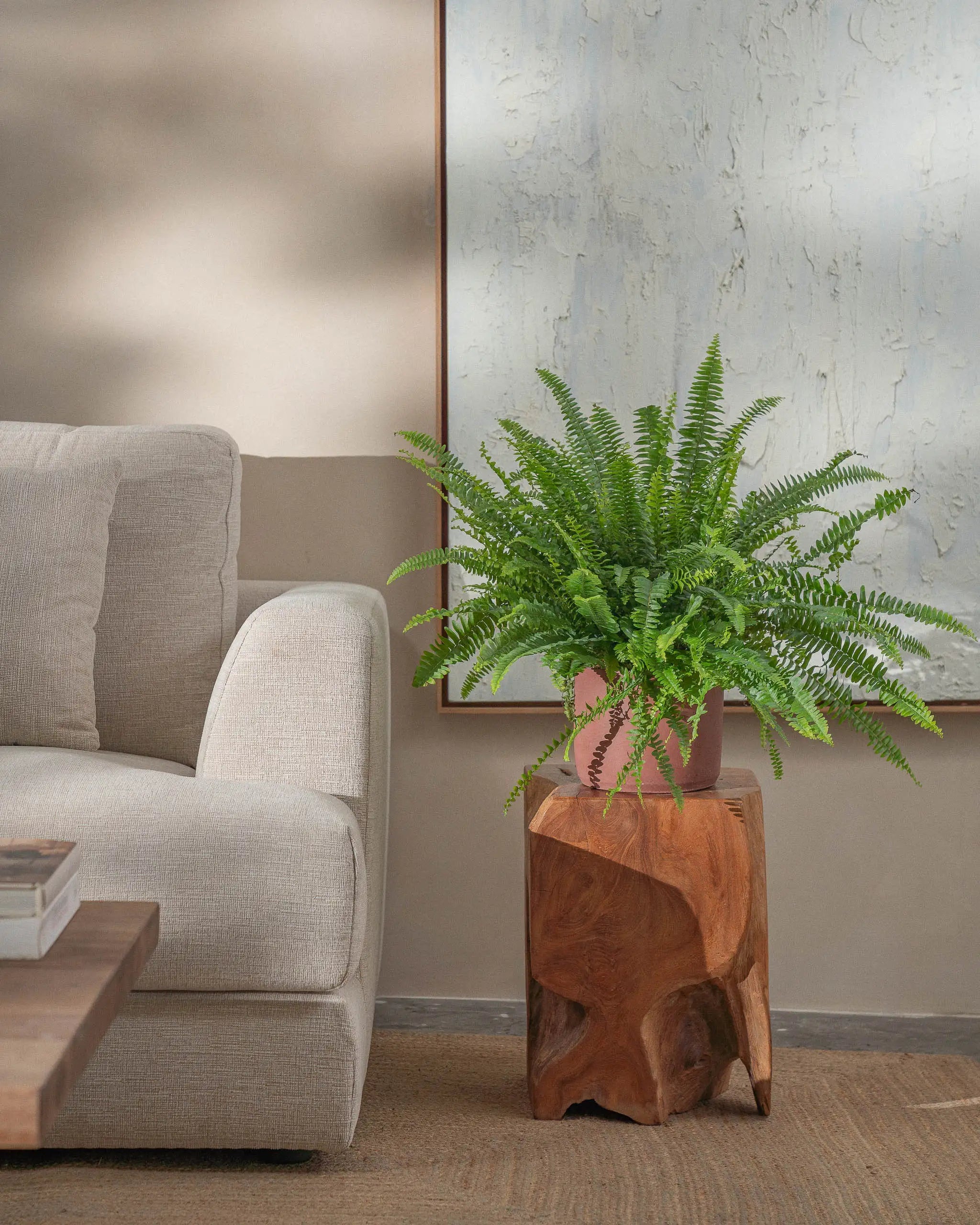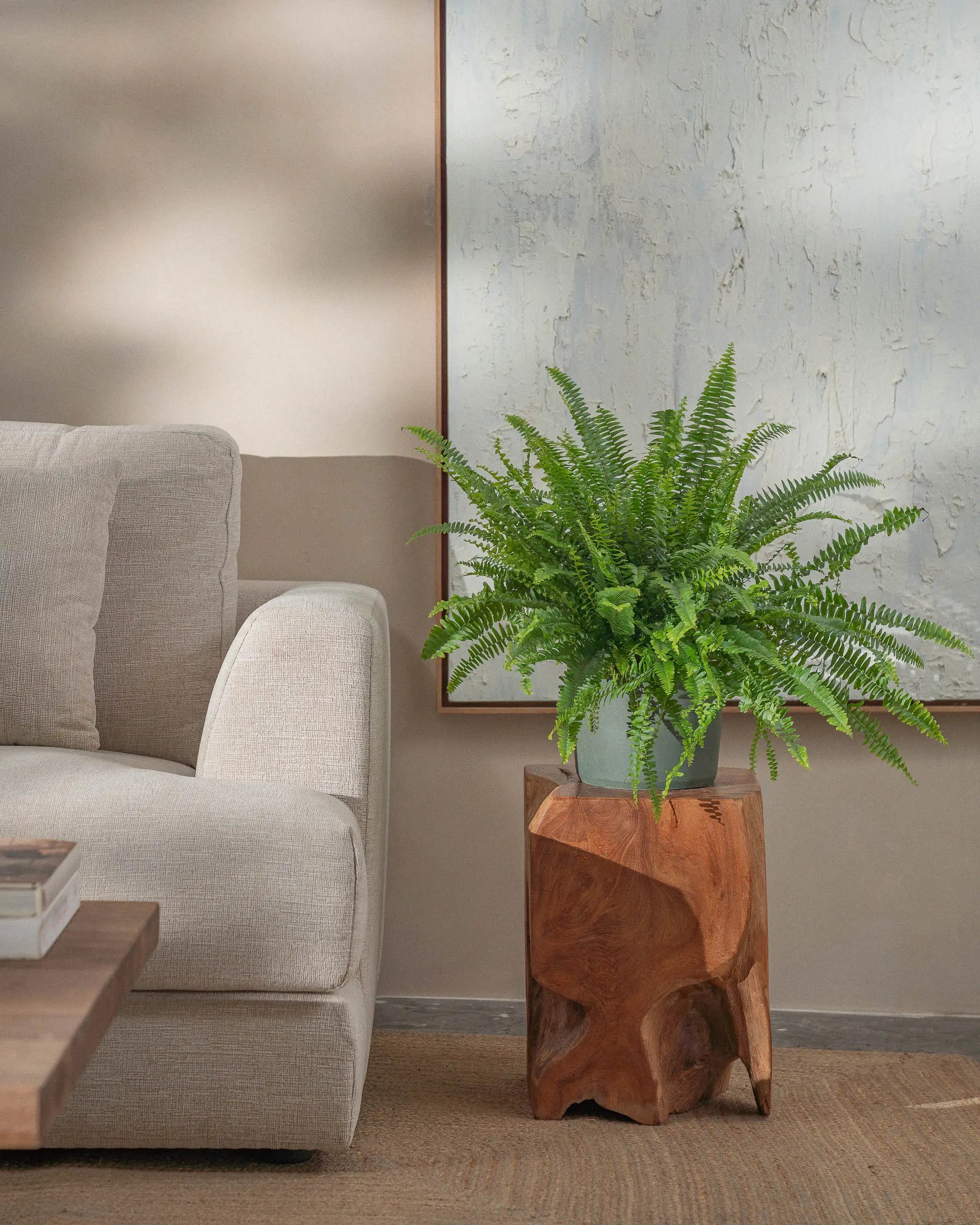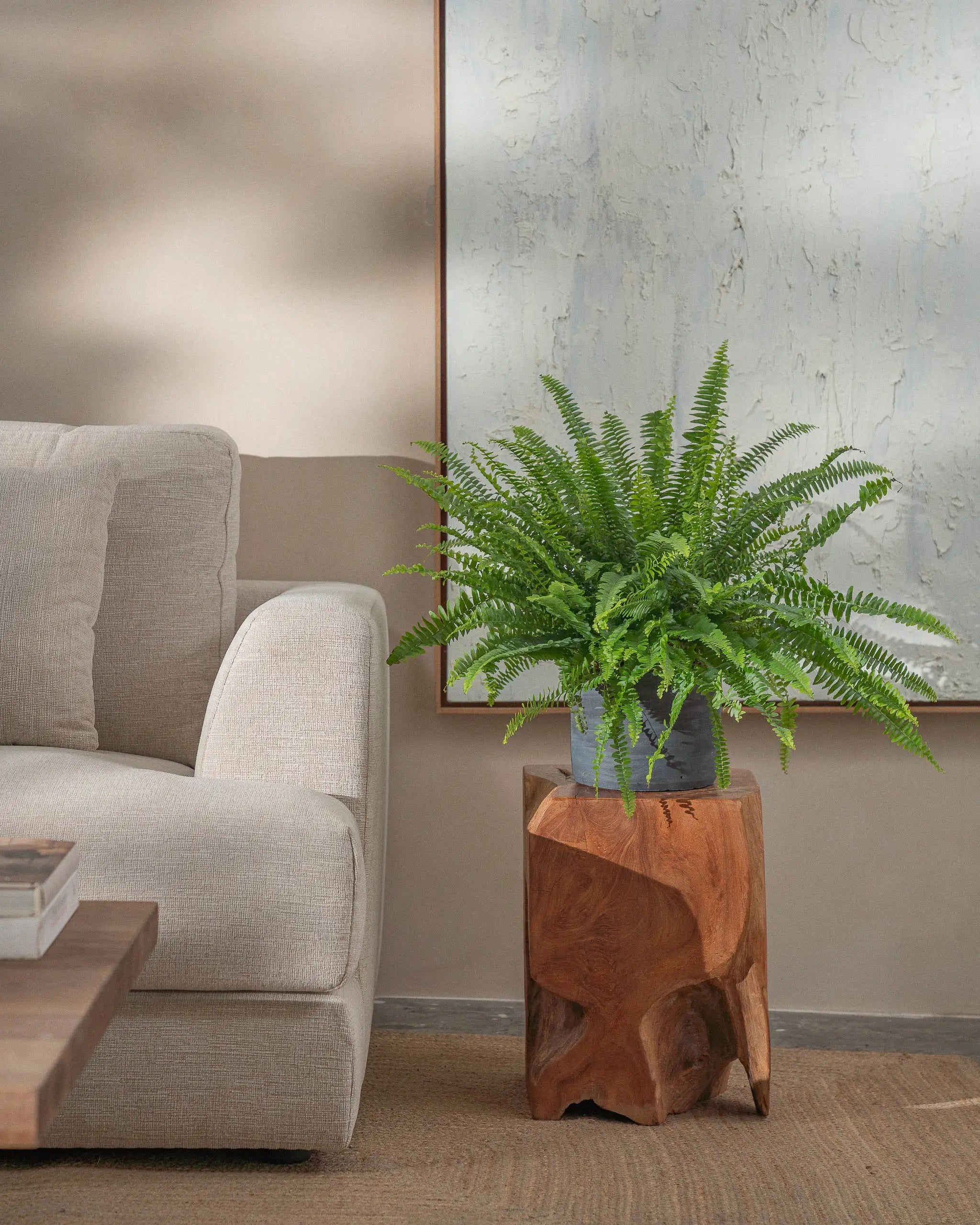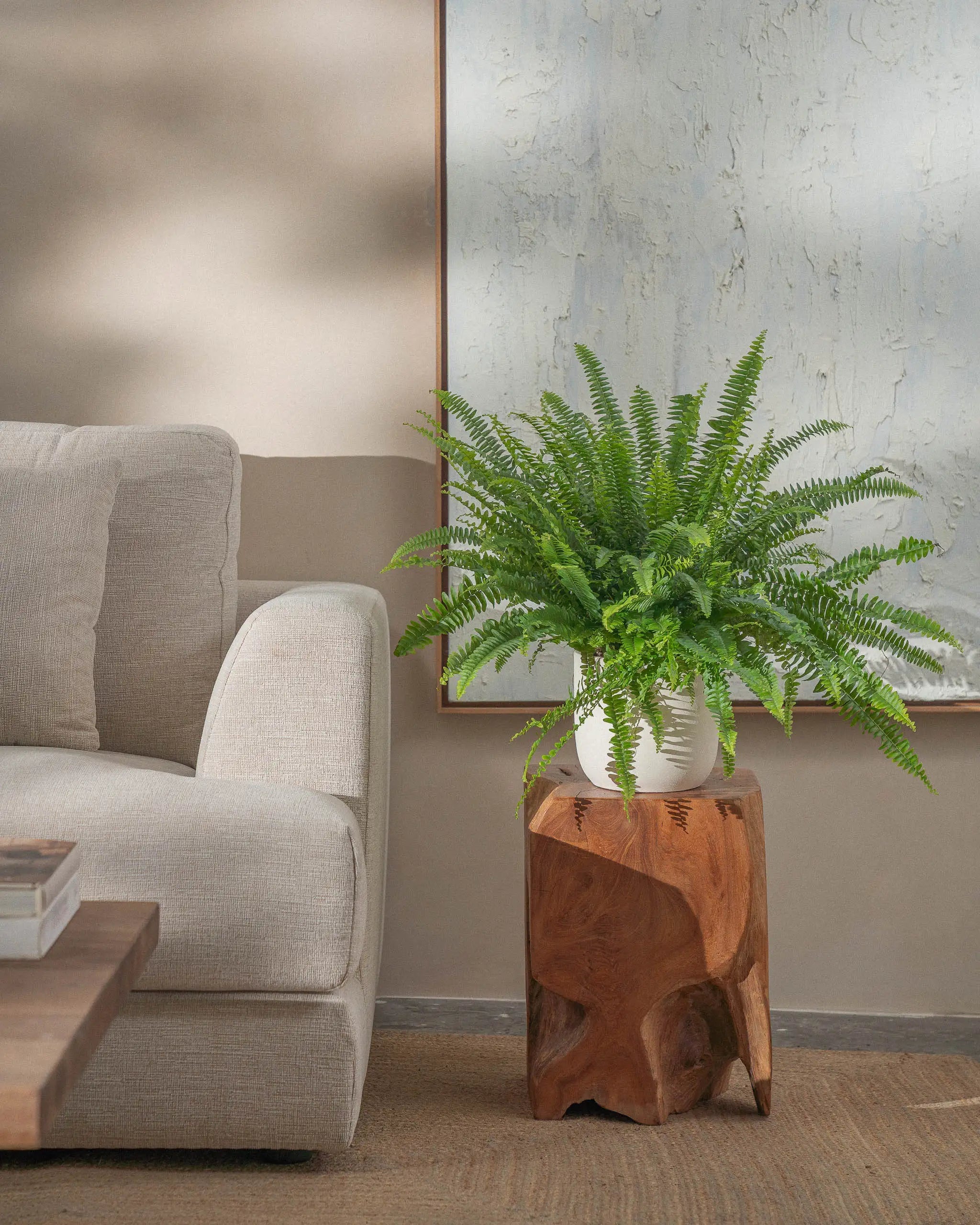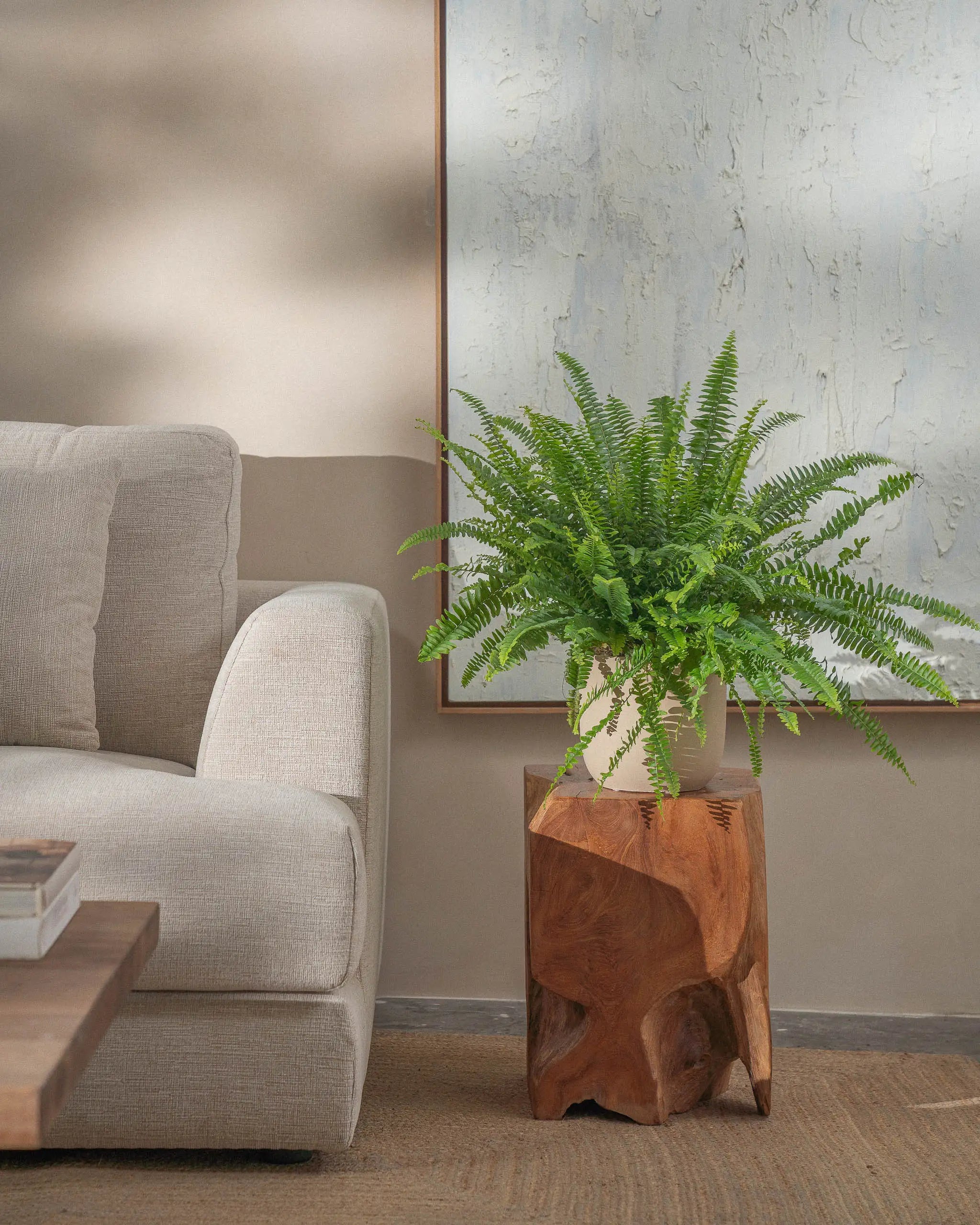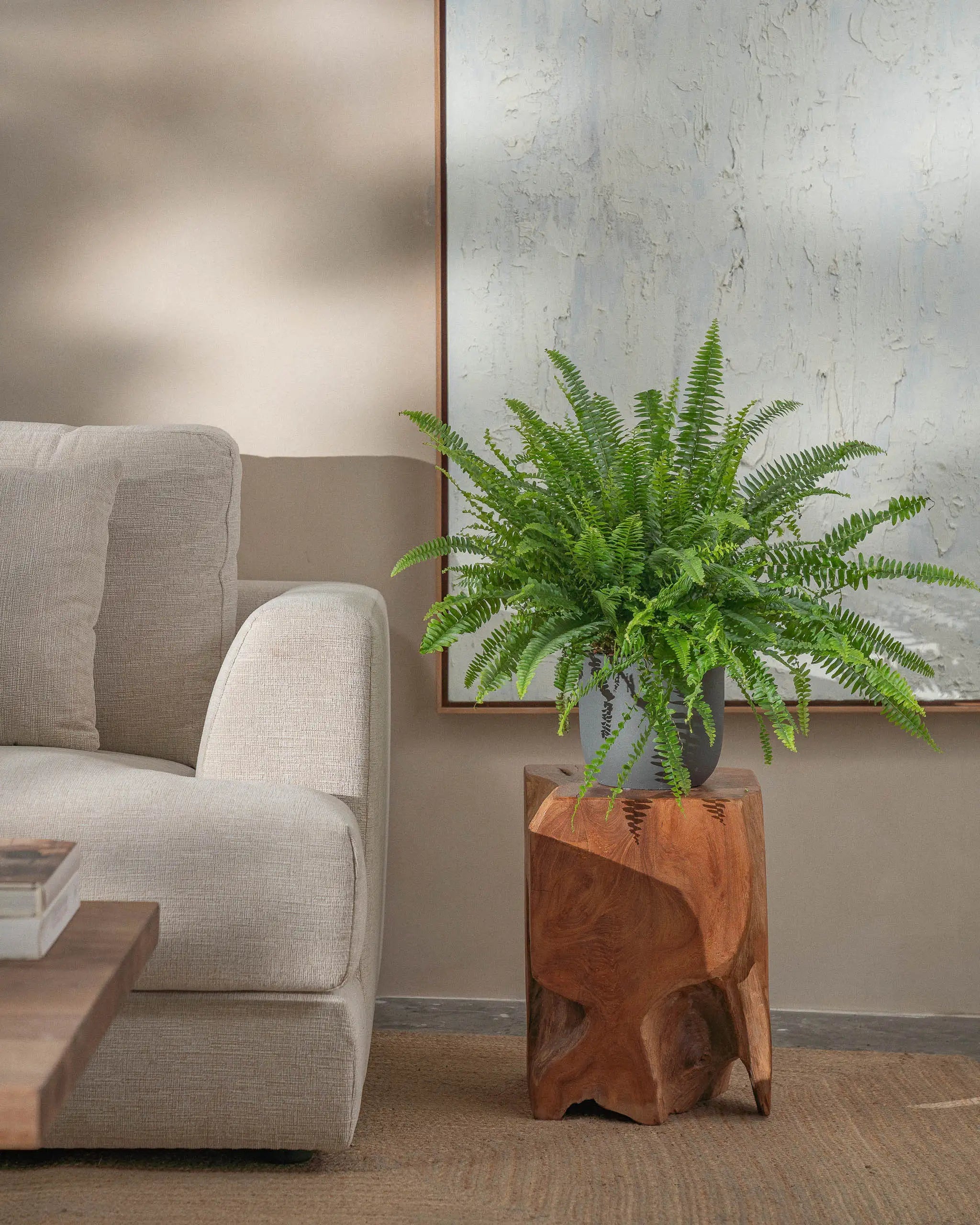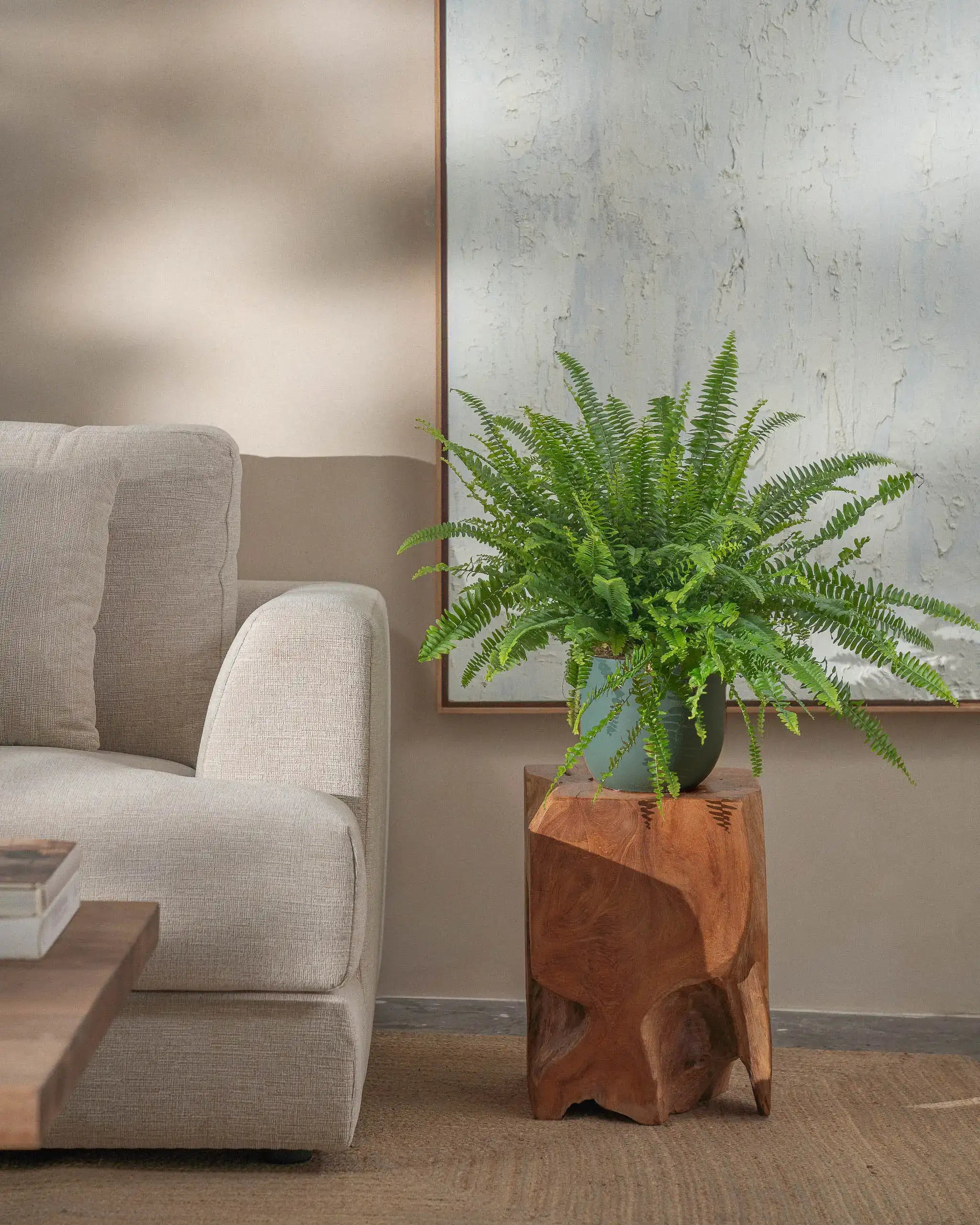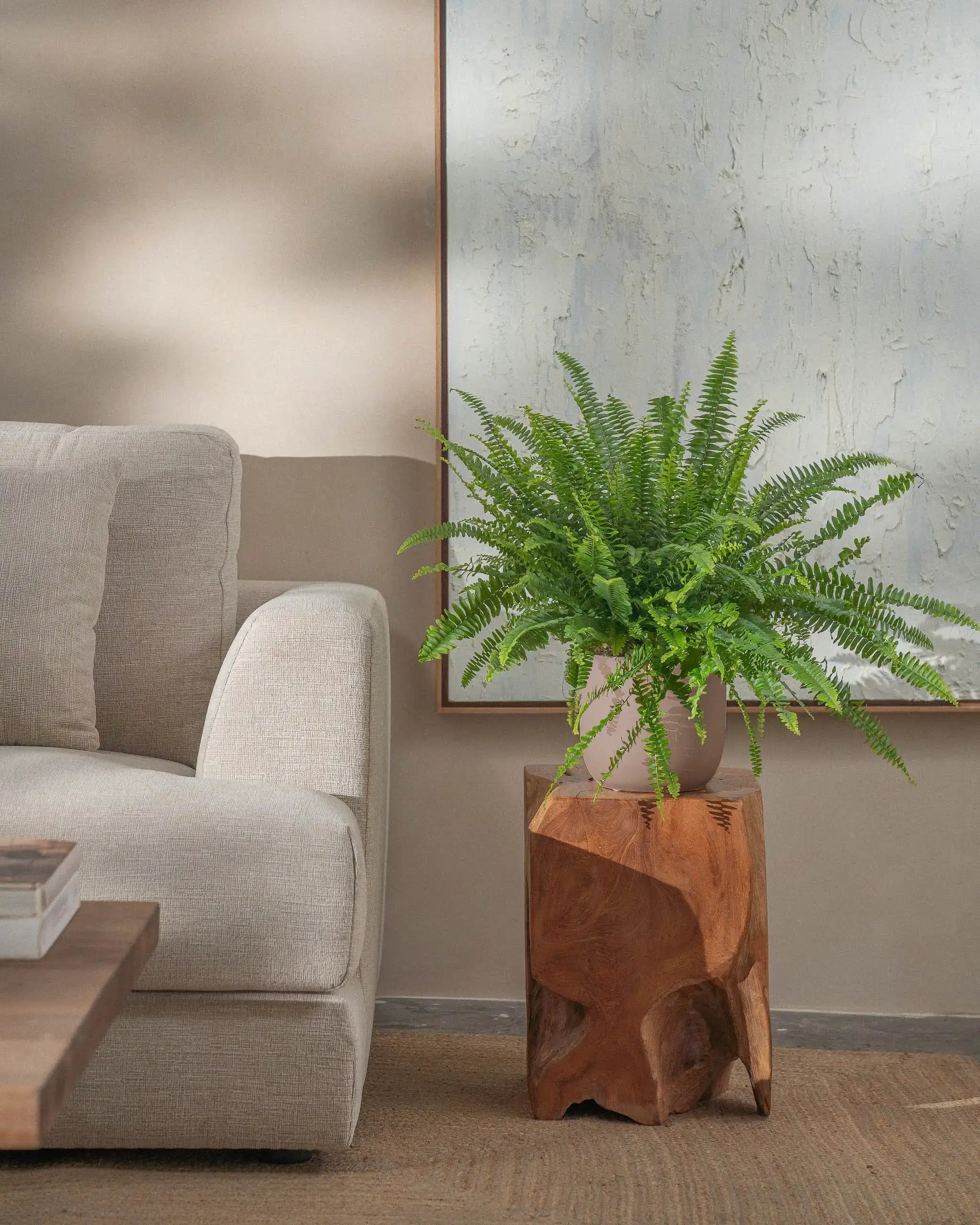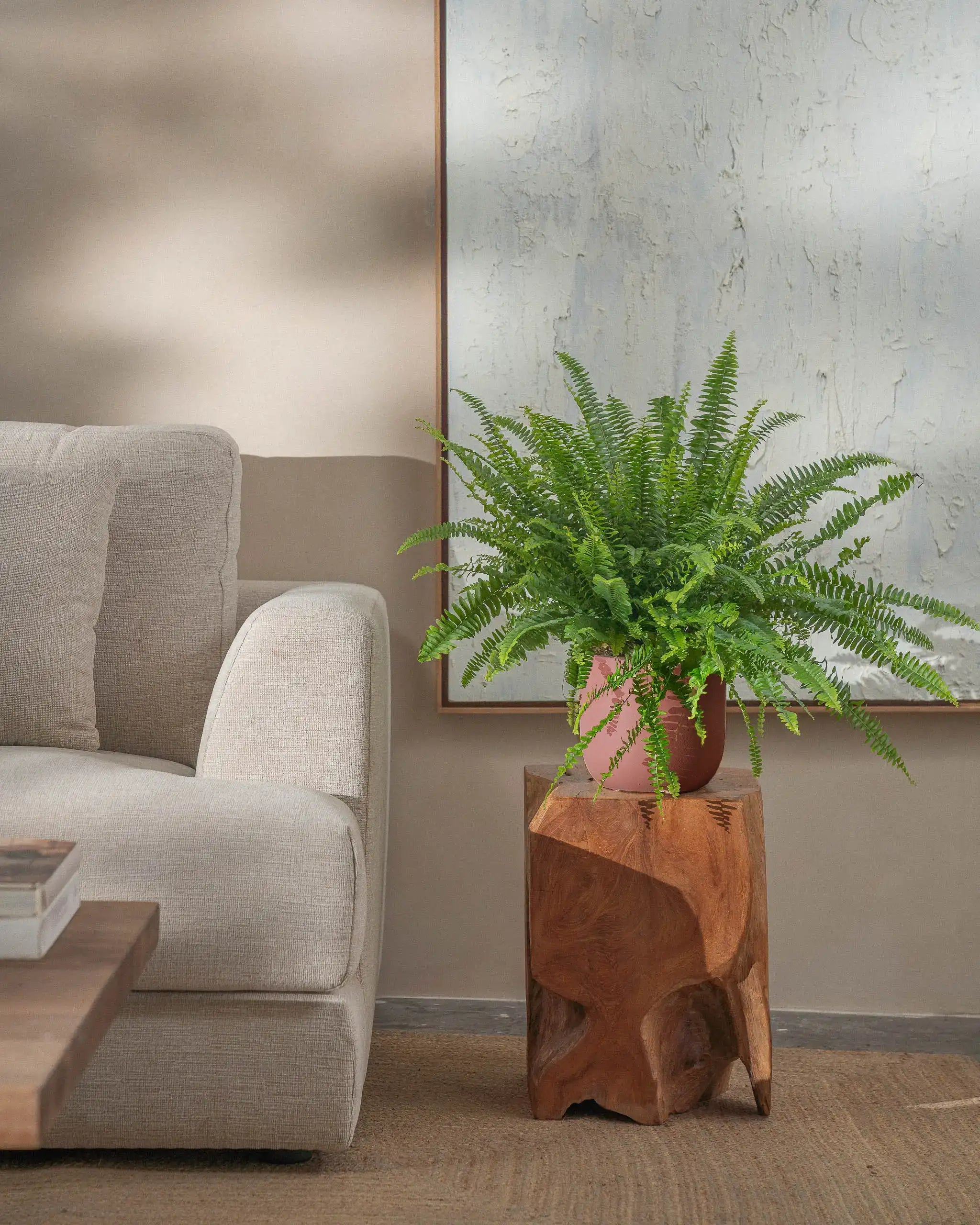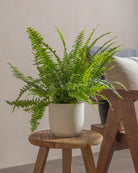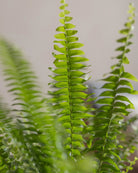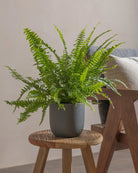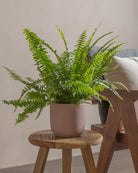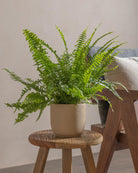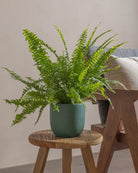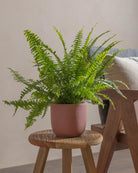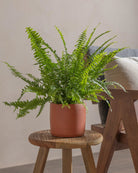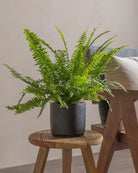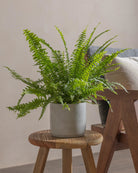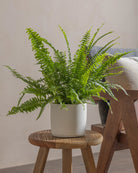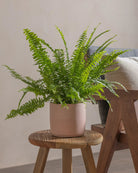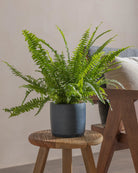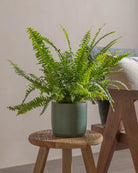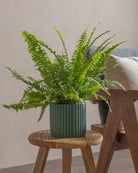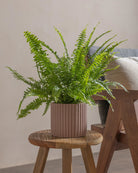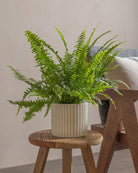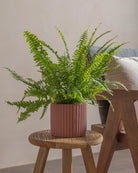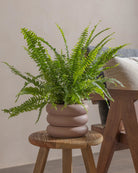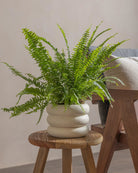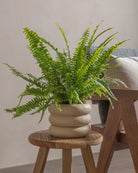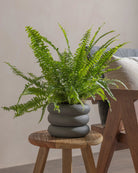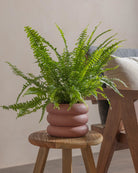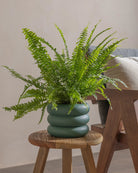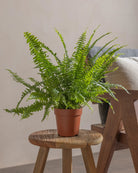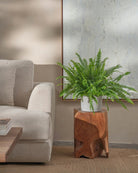1. Getting started with your Kentia Palm
Where to place your Kentia Palm
Place it somewhere bright but never under direct sunlight
If your plant is casting a sharp & defined shadow, the light is too hard. We're looking for a shadow that's soft and blurred. Harsh sunlight can fade away its colour and scorch its foliage
Potting your Kentia Palm
Leave it in its nursery pot
Your plant is comfy in its nursery pot. It's best to let it acclimate to the lighting, temperature, and humidity in its new home for at least 2 weeks before repotting it
Pro tip: if you purchased a planter with your plant, you can simply place the nursery pot in that planter
2. Continually caring for your Kentia Palm
Watering your Kentia Palm
Water when the top of the soil feels dry
Like most palms, Kentia palms love moist soil. To check if your palm is ready to be watered, simply touch the soil with your fingertip. If the surface of the soil feels:
1) Dry: your plant needs a watering
2) Damp/wet: your plant doesn't need a watering
Rule of thumb: expect to water your plant every 1-2 weeks, and more often with more light. Having said that, soil moisture should be your primary indicator for when you should water your plant, as the time may vary
When watering, gently pour until liquid flows through the drainage hole at the bottom and discard any excess water. Remember, never use cold water as this will shock your plant's roots
Finding your Kentia Palm's favorite temperature
Like most houseplants, Kentia Palms are happiest between 18°C-30°C
Repotting your Kentia Palm
When placed until bright indirect light, and care for well, Kentia Palms will grow quite large and will need to be repotted up to once a year, to accommodate that growth
When it's time, remember that Kentia Palms like soil with a lot of aeration (because they don't retain as much water/moisture). When your plant is ready for repotting, use a well-drained potting mix that includes ingredients such as perlite or lava rocks
Transfer your Kentia Palm into a pot that's a about 1-2 inches in diameters larger than its current one to give it ample room to grow
Cleaning/pruning your Kentia Palm
Though tedious, gently wiping your Kentia Palm free of dust with a damp rag once in a while will help it soak light and breathe through the little pores on its leaves (stomata)
Some common problems with Kentia Palms
1. Brown & moist tips
Usually caused by overwatering. Allow the soil to dry out sufficiently (could take 2-3 weeks) before rewatering again
2. Brown & crispy tips
Usually a sign of underwatering and too much light exposure, scorching the leaves. Try moving it further away from the window and reducing your water frequency
3. Whole frond is turning yellow
Usually caused by overwatering. Allow the soil to dry out sufficiently (could take 2-3 weeks) before rewatering again
Tempted? Gets yours delivered now.
Boston Fern Indoor Plant is one of the oldest plants in the world. This makes them perfectly suited for bathrooms and other hot and humid spaces.

